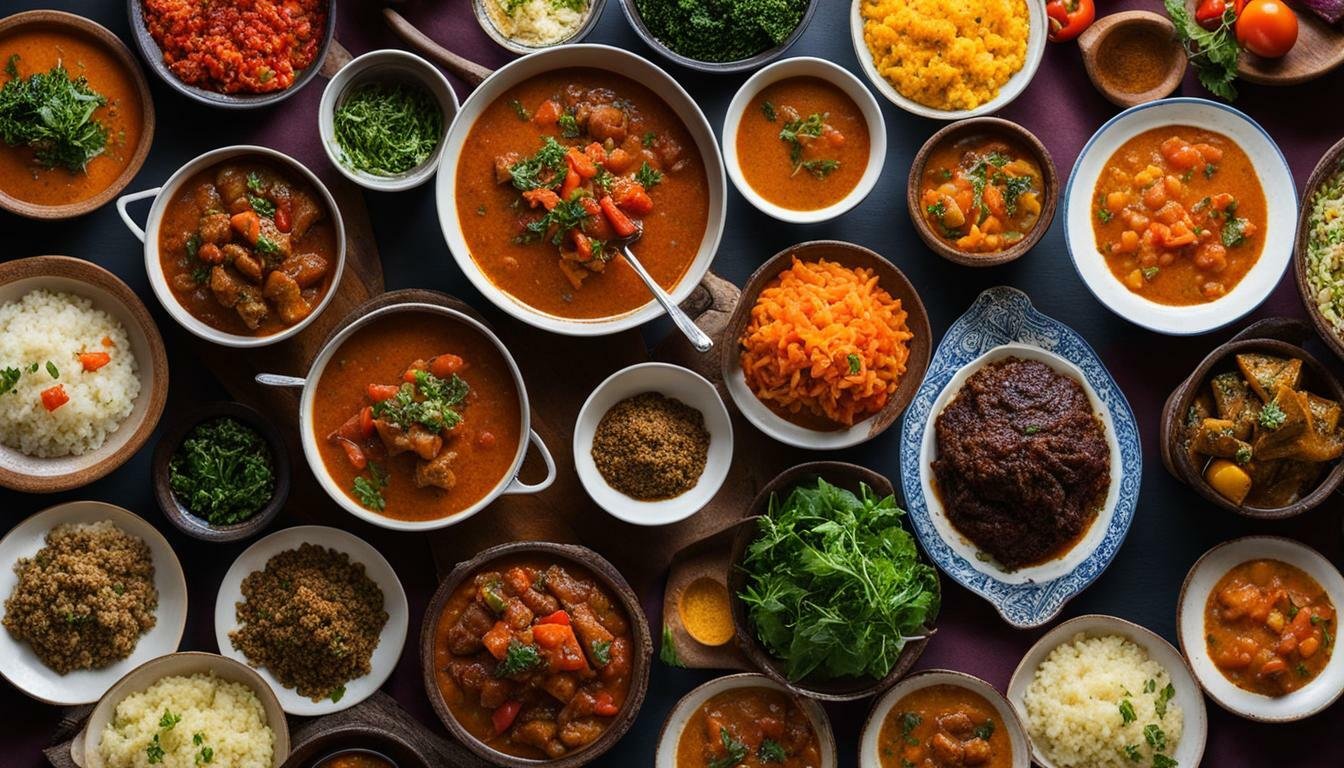Take Me to the Recipes
Join me on a mouthwatering journey through the heart of Africa as we explore the delicious world of Lesotho cuisine. Lesotho is a small country in Southern Africa. It has a rich cultural heritage and stunning natural beauty. Its cuisine is a reflection of the country’s unique history, diverse landscape, and vibrant food culture.
Lesotho’s culinary traditions date back hundreds of years and are deeply rooted in the country’s cultural identity. From hearty stews to savory meat dishes, Lesotho cuisine is bursting with flavor and character. The country’s cuisine is as diverse as its landscape, with dishes that vary from region to region.
So, let’s dive into the world of Lesotho cuisine and discover its traditional dishes, ingredients, food culture, and cooking techniques.
Key Takeaways:
- Lesotho cuisine is a reflection of the country’s unique history, diverse landscape, and vibrant food culture.
- Lesotho’s culinary traditions hundreds of years old and reflect the country’s cultural identity.
- Lesotho cuisine is bursting with flavor and character, with dishes that vary from region to region.
- Throughout the article, we will explore Lesotho’s traditional dishes, ingredients, food culture, and cooking techniques.
- Our culinary journey through Lesotho will inspire you to bring the flavors of Africa to your own kitchen.
Where is Lesotho?

Lesotho is completely surrounded by South Africa, making it one of only three countries in the world that are enclaved within another country

Index to the Contents
- Take Me to the Recipes
- More Articles
- Interesting Facts About Lesotho
- Lesotho’s History and the Affect It Has Had on the Cuisine
- What impact has the Climate and Geography had on Lesotho Cuisine?
- Lesotho Cuisine: A Celebration of Community and Tradition
- Lesotho National Food
- Traditional Dishes of Lesotho
- Lesotho Ingredients
- Lesotho Cooking Techniques: Mastering the Art of Basotho Cuisine
- Food Of Lesotho
- How Healthy is Lesotho Food?
- Lesotho Cuisine Recipes You can try at Home
- Conclusion
- FAQ’s
You may also be Interested in the Following Articles
- North and South American Cuisine – A Culinary Expedition
- Europe Cuisine: Savor the Continent’s Best Culinary Secrets!
- African Cuisine: Discover the Bold Flavors & Global Charm!
- Asian Cuisine Unlock its Secrets – Taste, Health & Global Influence!
Savor iconic Lesotho Recipes – Click on each tantalizing Image to open up the Recipe









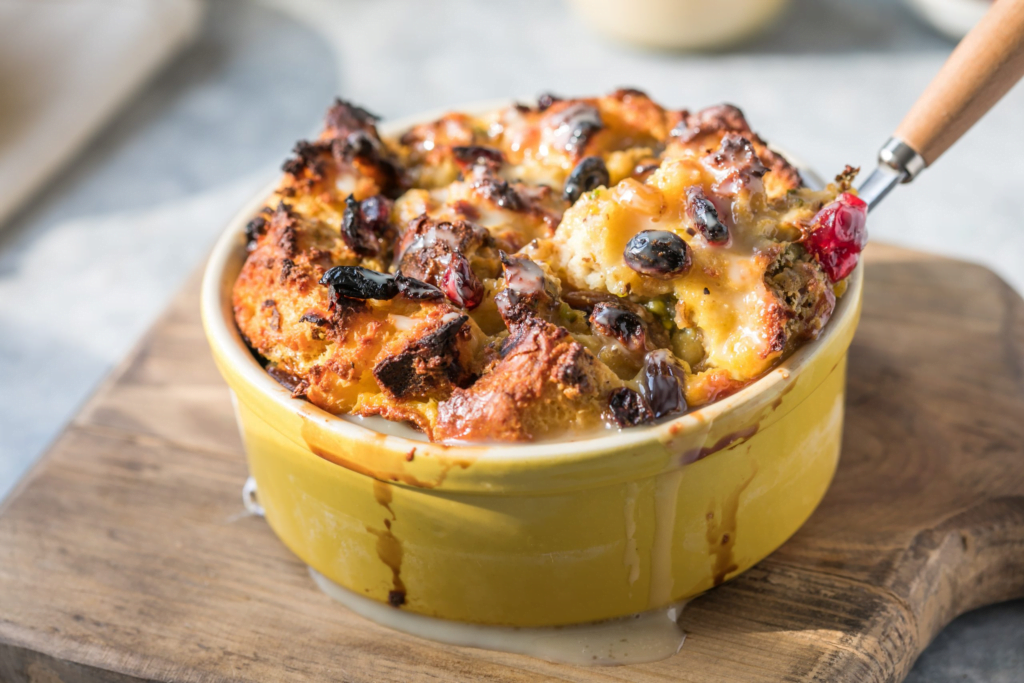

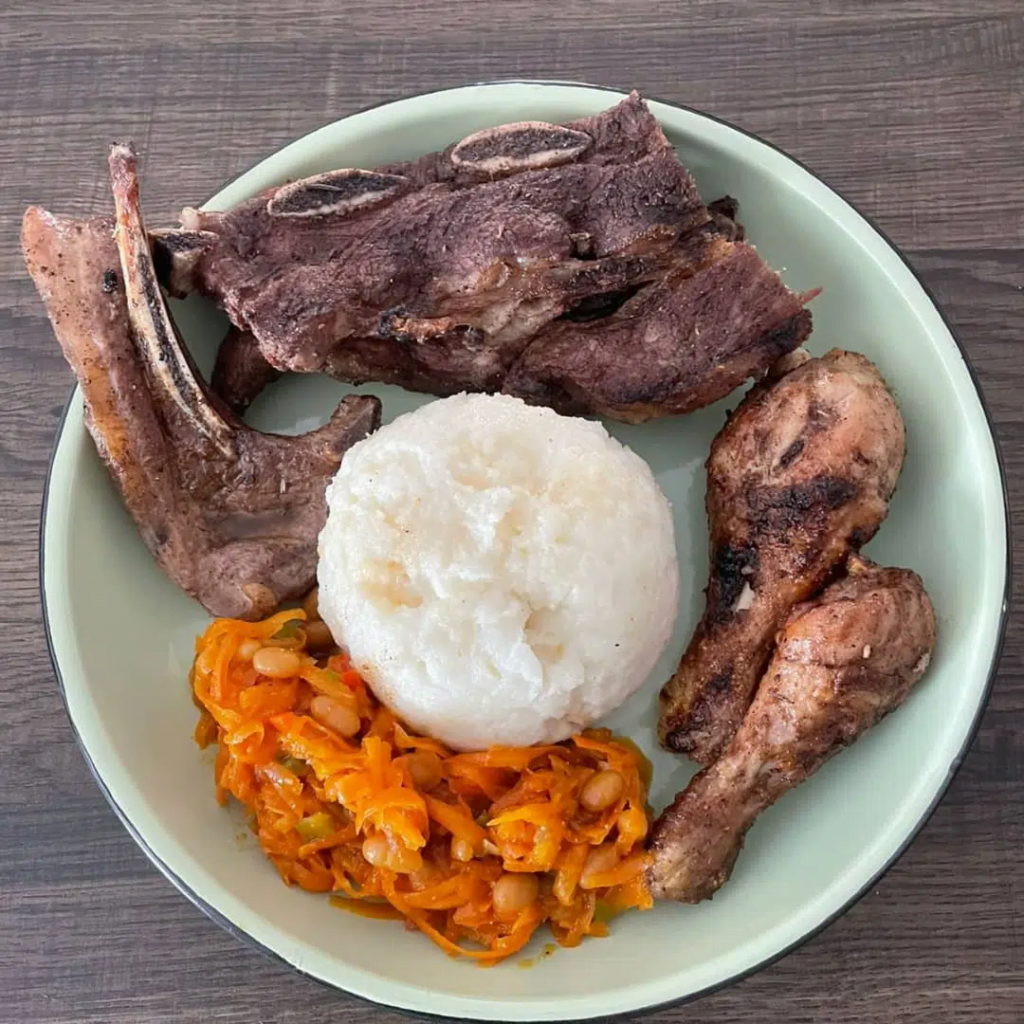



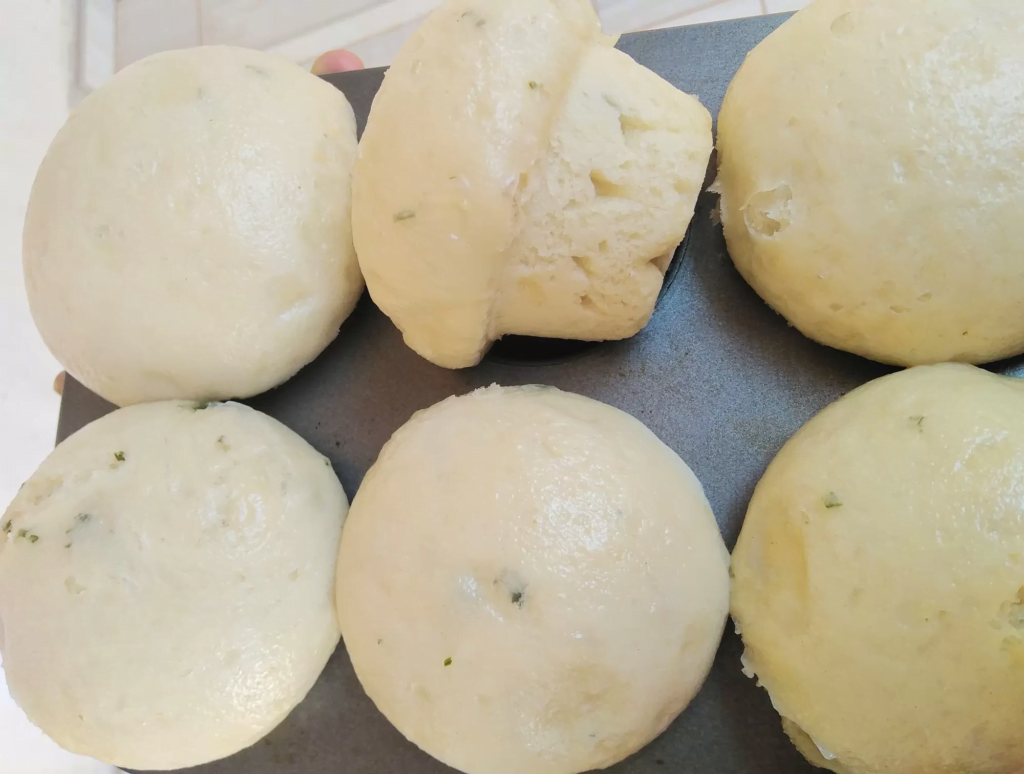

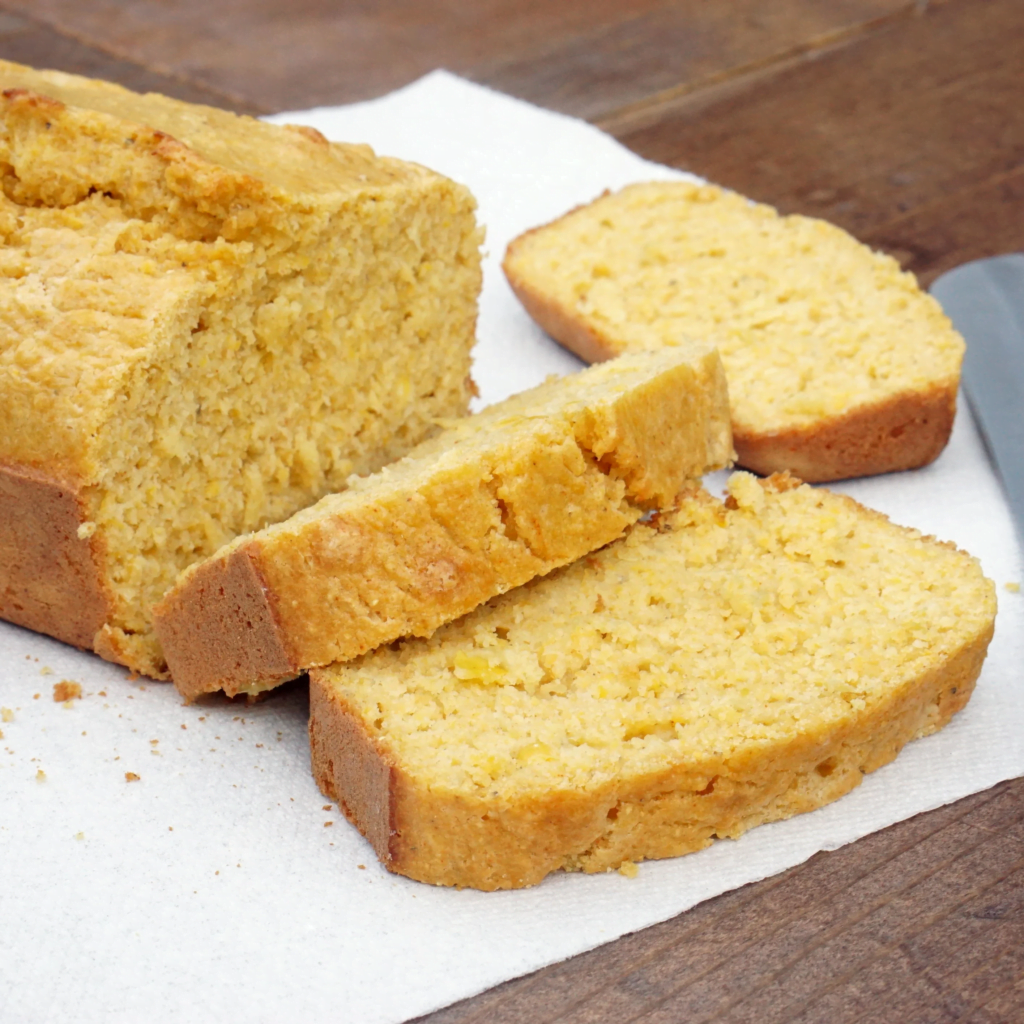



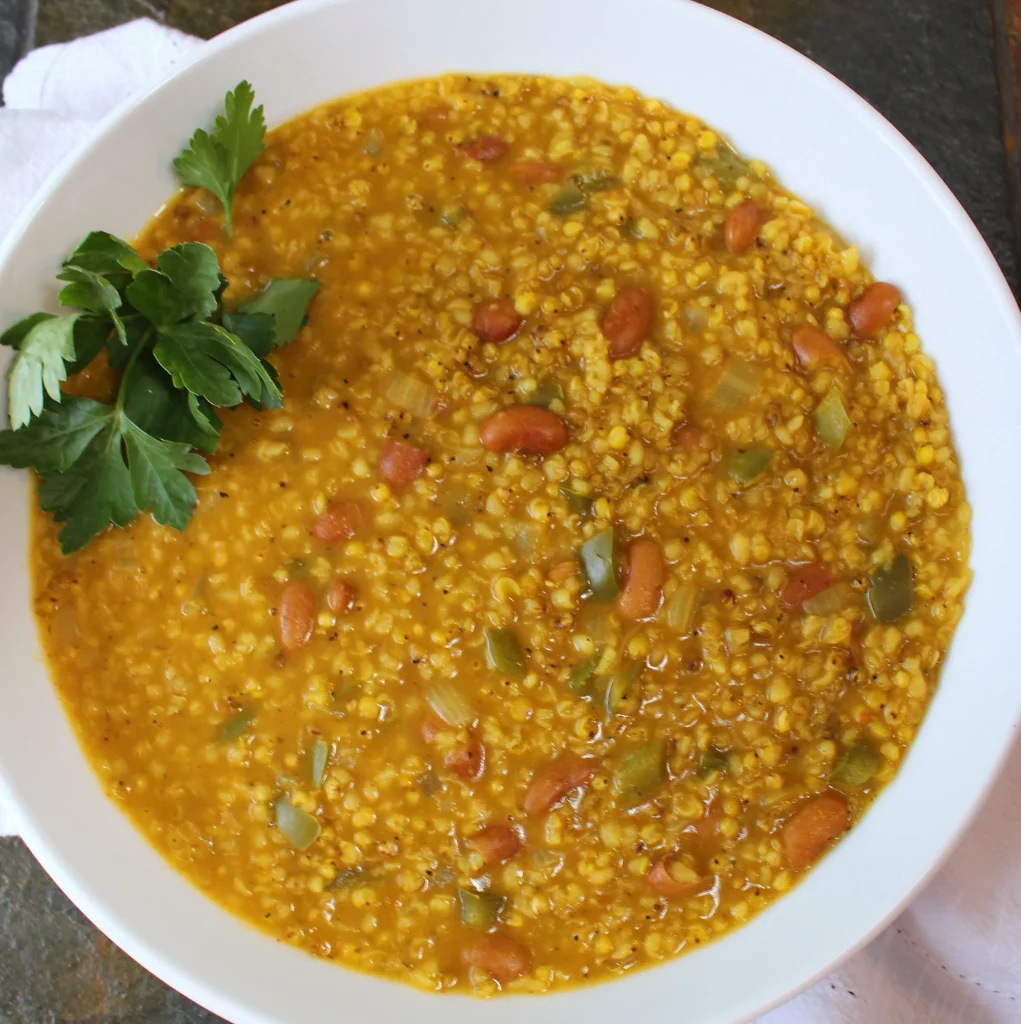
- Nyokoe
- Papa (Stiff Porridge)
- Likhobe
- Lekhotloane
- Moroho (Leafy Greens)
- Shisa nyama (barbecue meat)
- Likhobe (Boiled Maize Kernels)
- Moroho (steamed vegetables)
- Chakalaka & Pap (a spicy relish made from fermented vegetables)
Interesting Facts About Lesotho
The Kingdom in the Sky

Lesotho is often referred to as the “Kingdom in the Sky” due to its high-altitude location. The entire country is situated above 1,000 meters (3,280 feet) above sea level, making it the only nation entirely above 1,000 meters.
Pony Paradise
Lesotho has one of the highest horse-to-human ratios globally, with horses considered an essential means of transportation. The Basotho people have a strong equestrian culture, and the country is known for its breathtaking horseback trails.
No Coastline Woes
Landlocked Lesotho is entirely surrounded by South Africa, making it one of only three countries globally without a coastline. Despite its lack of shores, Lesotho boasts stunning mountainous landscapes.
Winter Wonderland

Lesotho experiences snowfall in winter, turning its mountainous regions into a snowy wonderland. Snow activities, such as skiing and snowboarding, are possible during this season.
Traditional Hats Tell Tales

The Basotho people are known for their distinctive traditional hats called “mokorotlo.” These conical hats are not only a symbol of cultural identity but also reflect the wearer’s social status and age.
National Dress Code
The traditional Basotho blanket, often worn as a cloak, is a prominent feature in Lesotho’s national dress. It has historical significance and is also a symbol of national pride.
Unique Alphabet Soup
Lesotho is home to one of the most complicated alphabets globally, Sesotho. It has a whopping 29 letters, including unique characters like “ḓ” and “ṱ,” making it challenging for newcomers to master.
Sky-High Judiciary
The High Court of Lesotho holds the distinction of being the highest-altitude court globally. It’s located in the capital, Maseru, reflecting the country’s lofty geographical profile.
Independence Day Shuffle
Lesotho celebrates its Independence Day on October 4th, but the date has seen several changes. Initially, it was celebrated on October 4, 1966, but later shifted to October 4, 1992, and then returned to the original date.
Diamonds in the Mountains

Lesotho is home to the world’s fifth-largest diamond, known as the “Lesotho Promise.” This enormous gemstone was discovered in the Letšeng Diamond Mine, emphasizing the country’s mineral wealth.
Lesotho’s History and the Affect It Has Had on the Cuisine

Lesotho’s history is marked by distinct periods, each contributing to the development and evolution of its unique cuisine. While the culinary traditions have deep roots, historical events and influences have shaped the ingredients, cooking techniques, and flavor profiles present in Lesotho’s dishes.
Pre-Colonial Era (Before 1822)
During this period, the Basotho people, Lesotho’s indigenous population, relied on agriculture and herding. Their diet included staples like maize, sorghum, millet, and indigenous vegetables.
The use of open-fire cooking methods and simple, traditional recipes laid the foundation for Lesotho’s authentic flavors.
Colonial Era (1822 – 1966)
Lesotho, formerly known as Basutoland, was a British protectorate. Colonial influence introduced new ingredients like wheat, potatoes, and European cooking techniques.
The British presence impacted dietary habits, with an increase in bread consumption and the adoption of tea as a popular beverage.
Independence and post-Independence Era (1966 Onward)
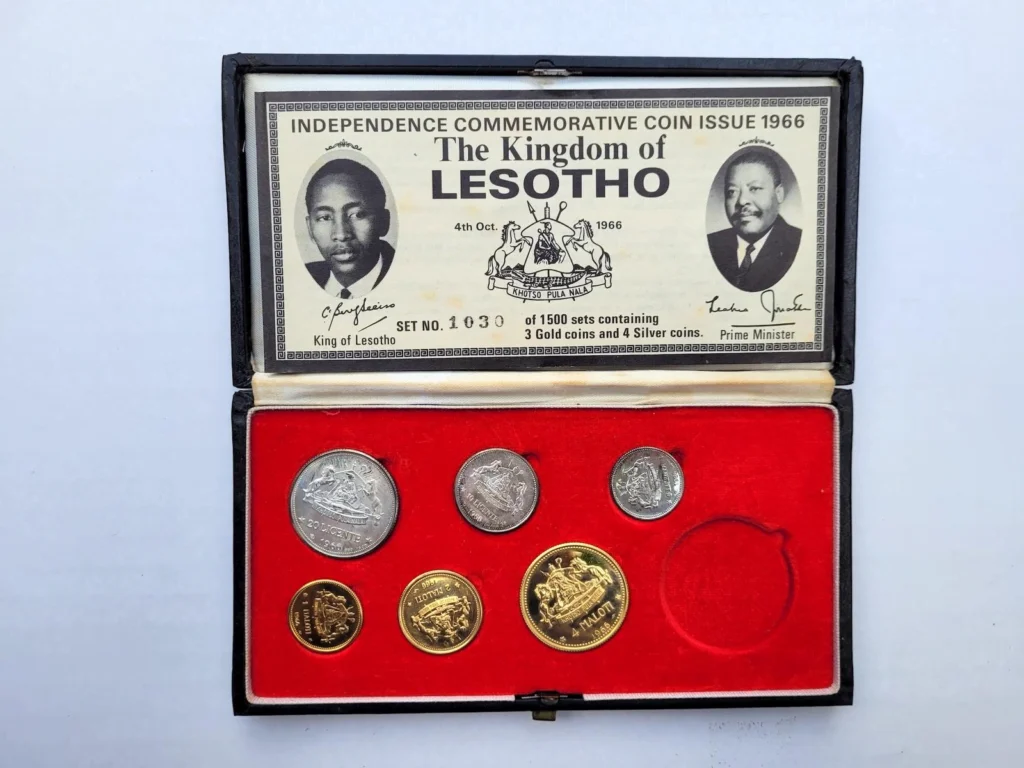
Lesotho gained independence from British colonial rule in 1966. This period saw a renewed focus on and celebrating Basotho cultural identity, including culinary traditions.
The cuisine continued to be shaped by local ingredients, such as maize, sorghum, and indigenous vegetables.
Economic Challenges and Globalization (Late 20th Century – Present)
Lesotho faced economic challenges, affecting food accessibility and dietary patterns. The impact of globalization introduced processed and convenience foods, influencing urban areas.
Traditional dishes, however, remained central in rural communities.
Cultural and Social Shifts (Late 20th Century – Present)
Social and cultural shifts, including urbanization and exposure to international cuisines, have influenced Lesotho’s culinary landscape.
While traditional dishes like papa (maize porridge) and moroho (stewed spinach) remain popular, there is an increasing blend of traditional and modern elements in Lesotho’s cuisine.
Environmental Factors and Agriculture (Throughout History)

Lesotho’s mountainous terrain and climate have influenced the availability of certain ingredients. The reliance on herding has led to the inclusion of meats like lamb and beef in traditional dishes. Agricultural practices continue to play a crucial role in shaping the country’s food culture.
Lesotho’s culinary history reflects a harmonious blend of indigenous traditions, colonial influences, and contemporary global elements. While the Basotho people have maintained a connection to their roots, historical events and external factors have contributed to the dynamic and diverse nature of Lesotho’s cuisine.
What impact has the Climate and Geography had on Lesotho Cuisine?

Lesotho’s Climate

Lesotho’s topography and location significantly influence its climate. The country experiences a temperate climate with alpine characteristics due to its high elevation.
The climate is characterized by extreme variability, which impacts agricultural practices and food availability.
Increased frequency of extreme events such as droughts and floods pose challenges for food security and traditional farming methods.
Lesotho’s Geography

Lesotho is a landlocked country entirely surrounded by South Africa.
Its mountainous terrain contributes to the alpine climate and influences the availability of arable land.
The highlands are cooler and more suitable for livestock farming, while the lowlands have more fertile soil for agriculture.
Impact on Lesotho Cuisine
Lesotho’s cuisine reflects a blend of African traditions and British influence due to its historical ties with South Africa and colonial past. Here are some key aspects:
Staple Foods
Maize, beans, sorghum, and various vegetables (such as spinach, pumpkins, and potatoes) form the basis of Lesotho’s dishes.
Pap-pap (or papa), a maize meal porridge, is a crucial part of every meal. It’s similar to other African staple foods like sadza or ugali.
Traditional Dishes
In summary, Lesotho’s cuisine reflects its unique blend of traditional African ingredients, British influence, and adaptations to the challenging climate and geography. 🍲🌿
References
Lesotho Cuisine: A Celebration of Community and Tradition

If there is one thing that defines Lesotho’s food culture, it is the sense of community and tradition that permeates every meal. In Lesotho, food is not just fuel for the body; it is a symbol of connection and celebration.
Communal meals are an essential part of Lesotho’s food culture, bringing families and friends together to share in the joys of cooking and eating together. Whether it’s a large family gathering or a small intimate meal, sharing food is a way to connect with others and celebrate the richness of the country’s culinary traditions.
Traditional events such as weddings, funerals, and other celebrations are also opportunities to showcase Lesotho’s food culture. Feasts that involve dishes such as pap, moroho (cooked greens), and meat stews are used in these events.
In Lesotho’s food culture, the act of cooking itself is also a communal affair. Women, in particular, are responsible for passing on the cooking traditions to the next generation, ensuring that the cuisine remains alive and well.
Overall, Lesotho’s food culture is a testament to the importance of tradition, community, and celebration. Through its cuisine, Lesotho showcases the richness of its culture and the deep connections that bring people together over a shared love of food.
Lesotho National Food

The Lesotho national food, known as pap or maize meal, is a staple in the country. It is a porridge-like dish that is made from ground maize and cooked until it thickens.
Pap is often served with various dishes such as meat stews, vegetables, or beans. It is a popular and filling meal that provides sustenance to the people of Lesotho.
Traditional Dishes of Lesotho

Lesotho traditional food dishes cover a wide range of styles and taste structures. Some examples are listed below.
Papa – Maize Porridge
A staple breakfast dish made from maize meal, water, and sometimes milk, creating a thick and satisfying porridge.
Mokoenya – Marinated Chicken
Chicken marinated in a blend of Lesotho’s flavorful spices, then grilled to perfection, offering a taste of the country’s traditional barbecue.
Moroho – Stewed Spinach
Nutrient-packed spinach stewed with tomatoes, onions, and spices, providing a healthy and flavorful side dish.
Butha-Buthe Lamb Stew
A hearty lamb stew named after Lesotho’s capital, Butha-Buthe, featuring tender meat simmered with vegetables and aromatic spices.
Motsameta – Pumpkin Soup
A comforting soup made with pumpkin, spices, and often coconut milk, creating a rich and velvety texture.
Sechu – Corn Bread
Traditional cornbread made with maize meal, a versatile and delicious accompaniment to many Lesotho dishes.
Chakalaka – Spicy Relish
A fiery and flavorful vegetable relish made with ingredients like tomatoes, onions, and chili peppers, adding a zesty kick to meals.
Thoteng – Lentil Curry
A protein-packed dish featuring lentils cooked in a flavorful curry sauce, often served with rice or flatbread.
Morija Bread Pudding
A sweet and comforting dessert made with bread, milk, sugar, and sometimes raisins, baked to perfection.
Lijabatho – Green Bean
A simple yet flavorful side dish featuring green beans cooked with onions, tomatoes, and spices, showcasing Lesotho’s fresh produce.
Typical Ingredients used in Lesotho Cooking

Lesotho’s cuisine, nestled amidst the breathtaking mountains of Southern Africa, paints a vibrant picture with its distinct and delicious ingredients. Each bite whispers tales of tradition, resourcefulness, and the unique flavors that define this landlocked kingdom. Let’s delve into the key ingredients that form the foundation of Lesotho’s culinary canvas:
Staples: Building Blocks of Flavor
- Maize: The undisputed king of Lesotho’s pantry, maize takes center stage in various forms. Pap (sadza), a thick porridge made from maize meal, serves as a comforting base for many dishes. Motoho, a fermented sorghum porridge, adds a tangy twist and packs a nutritional punch.
- Legumes: Beans, lentils, and peas are essential sources of protein and fiber. Likorongoe, a hearty stew featuring beans and vegetables, exemplifies their importance.
Fresh Bounty from the Earth
- Leafy Greens: Moroqo, a wild spinach with a slightly bitter taste, is a common sight in Lesotho cuisine, offering essential vitamins and minerals. Other seasonal vegetables like cabbage, carrots, and tomatoes add pops of color and flavor.
Meaty Delights
- Lamb: This is the most popular meat, often enjoyed in hearty stews, flavorful kebabs, and slow-cooked curries like marama, spiced with aromatic herbs.
Unique Local Treasures
- Mealie-meal worms: A protein-rich and sustainable ingredient, these crunchy critters add a unique texture and earthy flavor to dishes.
- Mopane worms: While not for everyone, these caterpillars boast a nutty taste and are considered a delicacy by some.
Aromatic Accents
- Spices: Lesotho cuisine utilizes a blend of spices like cumin, ginger, paprika, and chili flakes, adding depth and warmth to dishes.
- Souring Agents: Fermented milk (mafi) and fermented sorghum beer (joala) lend a distinct tang and complexity to stews and soups.
Beyond the Ingredients
Lesotho’s cuisine is more than just a list of ingredients; it’s a story reflected in each dish. It’s about respecting local resources, honoring tradition, and celebrating the bounty of the land.
So, when you explore these unique ingredients, remember, you’re not just cooking, you’re embarking on a cultural journey through the heart of Lesotho.
Lesotho Cooking Techniques: Mastering the Art of Basotho Cuisine

The way chefs prepare and cook food of Lesotho is not just as important as the ingredients. The cooking techniques used in Lesotho are as unique and diverse as the country itself. To truly appreciate the flavors of the food of Lesotho, it’s essential to understand the cooking methods that make its dishes so special.
One of the most popular cooking techniques in Lesotho is slow cooking in clay pots. This method is perfect for dishes like Nyokoe (a traditional Basotho stew) and Papa (a type of porridge). Slow cooking allows the ingredients to fully infuse with one another, creating a depth of flavor that is unparalleled.
Another prevalent cooking technique in Lesotho is grilling over an open fire. Grilling is particularly popular with meat dishes like Shisa nyama (barbecue meat). The open flame imparts a smoky flavor on the meat, making it tender and juicy.
When it comes to baking and roasting, Basotho cuisine often uses traditional ovens made from clay or brick. These ovens, called lesaka, are heated with wood or coal and provide a consistent heat source, ideal for baking bread and roasting meats.
In Lesotho, chefs use steaming as a technique to prepare dishes like lipabi (steamed bread) and moroho (steamed vegetables). This method locks in the nutrients and flavors of the ingredients, creating a healthy and delicious dish.
Fermenting and preserving are techniques that heavily influence Lesotho’s cuisine. One prominent example is chakalaka, a spicy relish made from fermented vegetables that is a staple in Basotho cuisine.
By understanding and mastering the cooking techniques used in Lesotho, you can bring a taste of Africa to your own kitchen. Experiment with slow cooking, grilling, baking, and steaming, and embrace the unique flavors and traditions of Lesotho’s cuisine.
Food Of Lesotho
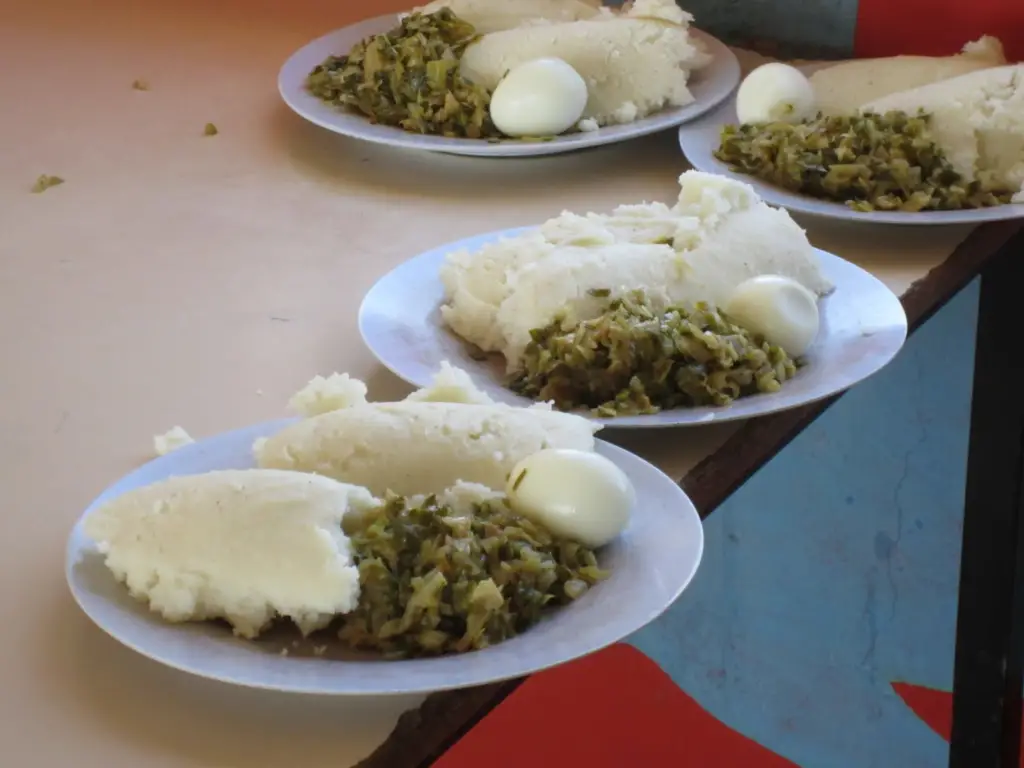
The food of Lesotho is a unique and flavorful cuisine that reflects the country’s rich cultural heritage. Known for its hearty and comforting dishes, the food of Lesotho is a blend of traditional African and European influences.
Staple foods include maize, sorghum, and millet, which are commonly used to make porridges and breads. Meat is also a prominent part of the cuisine, with dishes like chicken stew and mutton curry being popular choices.
Other traditional dishes include moroho (a wild spinach stew), pap (a maize-based porridge), and papa (a thick cornmeal drink). The food of Lesotho is not only nourishing but also a celebration of the country’s vibrant culinary traditions.
How Healthy is Lesotho Food?

Lesotho’s traditional food reflects a balance of nutrient-rich ingredients influenced by its climate, geography, and cultural heritage. Let’s explore the health aspects:
Lesotho’s Staple Foods
- Maize: A common staple, maize provides carbohydrates and energy.
- Beans: Rich in protein, fiber, and essential nutrients.
- Sorghum: A gluten-free grain with antioxidants and vitamins.
- Vegetables: Spinach, pumpkins, and potatoes offer vitamins and minerals.
The Health Benefits
- Fiber: Traditional dishes often include whole grains and legumes, promoting digestive health.
- Vitamins and Minerals: Vegetables contribute vitamins A, C, and potassium.
- Low Fat: Basotho cuisine tends to be low in unhealthy fats.
- Local Ingredients: Fresh, locally sourced produce enhances nutritional value.
Challenges
- Limited Variety: Traditional diets may lack diversity, affecting micronutrient intake.
- Salt Usage: Some dishes use salted meats, which can impact blood pressure.
- Food Security: Climate-related challenges affect crop yields and food availability.
Adaptations
- Basotho cuisine adapts to the environment. For example, dried fruits are common due to preservation needs.
- Herbs and Spices: Local herbs add flavor without excessive salt or fat.
Balance and Moderation
- While traditional foods offer health benefits, moderation is key.
- Combining traditional dishes with a variety of foods ensures a balanced diet.
In summary, Lesotho’s food is a mix of wholesome ingredients, but addressing challenges and promoting dietary diversity is essential for overall health. 🌿🍲🇱🇸
References
Lesotho Cuisine Recipes You can try at Home

Lesotho’s cuisine isn’t just a collection of dishes; it’s a rich tapestry of flavors woven with the island’s unique history and cultural influences. Imagine generations passing down recipes, each bite carrying whispers of tradition and delighting food lovers across the globe.
But you don’t need a plane ticket to experience the magic of Lesotho cuisine! We’ve gathered a collection of authentic recipes, each one an invitation to explore the island’s vibrant flavors from the comfort of your own kitchen.
Get ready to savor:
- Hearty stews: Packed with fresh vegetables and seasoned with aromatic spices, these warming dishes are a staple of Lesotho’s culinary landscape.
- Maize-based delights: From fluffy pap (sadza) to savory porridges, Lesotho’s cuisine celebrates the versatility of this humble grain.
- Flavorful meats: Grilled kebabs, slow-cooked curries, and succulent stews showcase the diverse ways Lesotho embraces meat in its dishes.
- Unique ingredients: Discover the delightful flavors of morogo (wild spinach), moroho (fermented sorghum porridge), and other ingredients unique to Lesotho.
More than just delicious:
As you cook these recipes, remember that each bite is a connection to Lesotho’s vibrant culture and rich history. You’ll be sharing in the traditions of generations past, experiencing the warmth of their hospitality, and adding a touch of global adventure to your kitchen.
Ready to embark on your culinary journey? Dive into our collection of authentic Lesotho recipes and unlock a world of delicious flavors!
Lesotho Food – Motsameta (Pumpkin Soup – Rich, velvety autumn warmth)

Embracing Basotho Comfort: Motsameta – Pumpkin Soup
Delve into the heart of Lesotho’s culinary tapestry with Motsameta, a soul-warming Pumpkin Soup that encapsulates the essence of autumn. Originating from the mountainous landscapes of Lesotho, this dish is a testament to the country’s reliance on seasonal ingredients and hearty flavors.
Join me on a flavorful journey as we explore the history and craft this rich, velvety soup that brings warmth to Lesotho’s chilly evenings.
Lesotho Food – Motsameta Ingredients
- 1 medium-sized pumpkin, peeled and diced
- 1 large onion, chopped
- 2 cloves garlic, minced
- 2 medium-sized potatoes, peeled and diced
- 4 cups vegetable or chicken broth
- 1 cup coconut milk
- 2 tablespoons olive oil
- 1 teaspoon ground cinnamon
- 1/2 teaspoon ground nutmeg
- Salt and pepper to taste
- Fresh parsley for garnish
Lesotho Food – Motsameta Recipe
1. Preparing the Vegetables:
a. Peel and dice the pumpkin and potatoes into uniform chunks. b. Chop the onion and mince the garlic.
2. Sautéing Aromatics:
a. In a large pot, heat olive oil over medium heat. b. Add chopped onion and minced garlic, sautéing until softened.
3. Cooking the Vegetables:
a. Incorporate diced pumpkin and potatoes into the pot. b. Stir in ground cinnamon and nutmeg, ensuring the vegetables are coated in the aromatic mixture.
4. Adding Broth and Simmering:
a. Pour in vegetable or chicken broth, covering the vegetables. b. Bring the mixture to a boil, then reduce heat to low. c. Let it simmer for 20-25 minutes or until the vegetables are tender.
5. Blending and Finishing:
a. Use an immersion blender to puree the soup until smooth. b. Stir in coconut milk for a creamy texture. c. Season with salt and pepper to taste.
6. Garnishing and Serving:
a. Ladle the soup into bowls and garnish with fresh parsley. b. Serve warm, accompanied by crusty bread or a sprinkle of additional cinnamon for added warmth.
Serving Information:
- Serves: 4-6 people
- Estimated Cooking Time: 45 minutes
- Estimated Calories (per serving):
- Pumpkin: 30 calories per cup
- Onion: 45 calories per medium onion
- Garlic: 4 calories per clove
- Potatoes: 130 calories per medium potato
- Vegetable or Chicken Broth: 10 calories per cup
- Coconut Milk: 60 calories per cup
- Olive Oil: 120 calories per 2 tablespoons
Indulge in the comforting flavors of Lesotho with Motsameta, a Pumpkin Soup that not only warms the body but also brings a taste of Basotho tradition to your table. Stay tuned for more delightful recipes from my kitchen to yours!
Lesotho Food – Tsepisa (Bean Casserole – Comforting, savory satisfaction)

Exploring Basotho Comfort: Tsepisa – Bean Casserole Coziness
Embark on a flavorful adventure into Lesotho’s culinary heart with Tsepisa, a comforting bean casserole that encapsulates the savory satisfaction of Basotho cuisine.
Nestled within the mountainous beauty of Lesotho, this dish has been a symbol of warmth, nourishment, and traditional flavors. Join me as we delve into the history and prepare this delightful bean casserole, bringing the taste of Lesotho’s cozy kitchens to your home.
Lesotho Food – Tsepisa Ingredients
For the Casserole:
- 2 cups dried red kidney beans, soaked overnight
- 1 large onion, finely chopped
- 2 tomatoes, diced
- 3 cloves garlic, minced
- 1 cup spinach, chopped
- 2 tablespoons tomato paste
- 2 tablespoons vegetable oil
- 1 teaspoon ground cumin
- 1 teaspoon paprika
- Salt and pepper to taste.
Topping:
- 4 cups maize meal (cornmeal)
- 6 cups water
- Salt to taste
Lesotho Food – Tsepisa Recipe
1. Preparing the Beans:
a. Rinse soaked kidney beans and cook in a large pot with enough water until tender. b. Drain cooked beans and set aside.
2. Sautéing Aromatics:
a. In a separate pot, heat vegetable oil over medium heat. b. Add chopped onion and minced garlic. Sauté until golden brown.
3. Adding Tomatoes and Spinach:
a. Stir in diced tomatoes, chopped spinach, tomato paste, ground cumin, paprika, salt, and pepper. b. Cook until the tomatoes break down, and the spinach wilts.
4. Combining Beans and Aromatics:
a. Add the cooked kidney beans to the pot with the aromatic mixture. b. Allow the flavors to meld over low heat for an additional 10-15 minutes.
5. Preparing the Maize Meal Topping:
a. In a separate pot, bring water to a boil. b. Gradually whisk in maize meal, stirring continuously to avoid lumps. c. Cook until the maize meal thickens, then add salt to taste.
6. Assembling and Serving:
a. Spoon the bean casserole onto plates and top with a generous serving of maize meal.
Serving Information:
- Serves: 6 people
- Estimated Cooking Time: 1.5 hours
- Estimated Calories (per serving):
- Bean Casserole: 200 calories per cup
- Maize Meal Topping: 150 calories per cup
Indulge in the heartiness of Lesotho with Tsepisa, a bean casserole that promises savory satisfaction and a taste of Basotho culinary heritage. Stay tuned for more delectable journeys into the heart of Southern African cuisine!
Lesotho Food – Sechu (Corn Bread – Traditional cornmeal delight)

Nurturing Heritage: Sechu – Corn Bread
Embark on a culinary journey to Lesotho with Sechu, a delightful Corn Bread that embodies the spirit of Basotho tradition. Rooted in the heart of Southern Africa, Lesotho’s cuisine often features cornmeal as a staple, reflecting the importance of agriculture in the region.
Sechu, a simple yet flavorful corn bread, serves as a testament to the country’s deep connection with its indigenous ingredients. Join me in exploring the history and crafting this traditional delight that has graced Basotho tables for generations.
Lesotho Food – Sechu Ingredients
- 2 cups cornmeal
- 1 cup all-purpose flour
- 1 tablespoon baking powder
- 1 teaspoon salt
- 2 tablespoons sugar
- 1 1/2 cups buttermilk
- 2 large eggs
- 1/4 cup vegetable oil
Lesotho Food – Sechu Recipe
1. Preparing the Dry Ingredients:
a. In a large bowl, combine cornmeal, all-purpose flour, baking powder, salt, and sugar. b. Mix the dry ingredients well, ensuring an even distribution.
2. Combining Wet Ingredients:
a. In a separate bowl, whisk together buttermilk, eggs, and vegetable oil. b. Ensure the wet ingredients are thoroughly combined.
3. Mixing the Batter:
a. Gradually add the wet ingredients to the dry ingredients, stirring gently. b. Mix until just combined; avoid over-mixing to maintain a tender texture.
4. Preparing the Baking Dish:
a. Preheat the oven to 375°F (190°C). b. Grease a baking dish (9×9 inches) or line it with parchment paper.
5. Baking the Sechu:
a. Pour the batter into the prepared baking dish, spreading it evenly. b. Bake for 25-30 minutes or until the top is golden brown and a toothpick inserted comes out clean.
6. Serving and Enjoying:
a. Allow the Sechu to cool for a few minutes before slicing. b. Serve warm, and enjoy the authentic taste of Basotho Corn Bread.
Serving Information:
- Serves: 8-10 people
- Estimated Cooking Time: 30 minutes
- Estimated Calories (per serving):
- Cornmeal: 100 calories per cup
- All-purpose Flour: 455 calories per cup
- Buttermilk: 98 calories per cup
- Vegetable Oil: 120 calories per 2 tablespoons
- Eggs: 70 calories per large egg
Delight in the heartwarming simplicity of Lesotho’s culinary heritage with Sechu, a Corn Bread that brings the flavors of Southern Africa to your home. Stay tuned for more cultural culinary adventures!
Lesotho Food – Thoteng (Lentil Curry Protein – packed plant-based goodness)

Embracing Basotho Nourishment: Thoteng – Lentil Curry
Discover the heartiness of Lesotho’s cuisine with Thoteng, a wholesome Lentil Curry that captures the essence of plant-based goodness. Hailing from the mountainous regions of Lesotho, this dish showcases the Basotho people’s reliance on nutritious pulses and locally available ingredients.
Join me in unraveling the history and preparing this protein-packed lentil curry that brings both flavor and health to your table.
Lesotho Food – Thoteng Ingredients
- 2 cups dried lentils, rinsed and drained
- 1 large onion, finely chopped
- 2 cloves garlic, minced
- 1 can (14 oz) diced tomatoes
- 1 can (14 oz) coconut milk
- 2 tablespoons curry powder
- 1 teaspoon ground cumin
- 1 teaspoon ground coriander
- 1 teaspoon turmeric
- Salt and pepper to taste
- Fresh cilantro for garnish
Lesotho Food – Thoteng Recipe
1. Preparing Lentils:
a. Rinse lentils thoroughly and set them aside. b. In a pot, bring 4 cups of water to a boil and add lentils. Cook until lentils are tender, approximately 20-25 minutes. Drain any excess water.
2. Sautéing Aromatics:
a. In a large skillet, heat a bit of oil over medium heat. b. Add chopped onion and minced garlic, sautéing until softened.
3. Incorporating Spices:
a. Stir in curry powder, ground cumin, ground coriander, and turmeric, allowing the spices to toast for a minute.
4. Adding Tomatoes and Coconut Milk:
a. Pour in diced tomatoes (with their juices) and coconut milk. b. Mix well, combining the flavors.
5. Simmering and Seasoning:
a. Add cooked lentils to the skillet, allowing the mixture to simmer for an additional 10-15 minutes. b. Season with salt and pepper to taste.
6. Garnishing and Serving:
a. Garnish with fresh cilantro before serving. b. Serve the lentil curry over rice or with your favorite flatbread.
Serving Information:
- Serves: 4-6 people
- Estimated Cooking Time: 45 minutes
- Estimated Calories (per serving):
- Lentils: 230 calories per cup
- Onion: 45 calories per medium onion
- Garlic: 4 calories per clove
- Coconut Milk: 120 calories per cup
- Diced Tomatoes: 30 calories per cup
- Curry Powder: 20 calories per tablespoon
Delight in the heartwarming flavors of Lesotho with Thoteng, a Lentil Curry that not only honors tradition but also nourishes your body with plant-based protein. Stay tuned for more delightful recipes from the heart of Southern Africa!
Lesotho Food – Morija (Bread Pudding – Sweet, comforting dessert)

Savoring Lesotho’s Sweet Tradition: Morija – Bread Pudding
Dive into the comforting world of Lesotho’s culinary heritage with Morija, a delightful Bread Pudding that encapsulates the warmth and sweetness of Basotho desserts. Originating from the charming regions of Lesotho, Morija is not just a pudding; it’s a testament to the country’s love for simple, yet heartwarming, desserts.
Join me in exploring the history and crafting this sweet, comforting treat that has found its way to Basotho tables for generations.
Lesotho Food – Morija Ingredients
- 4 cups cubed stale bread
- 2 cups milk
- 1/2 cup sugar
- 2 large eggs
- 1 teaspoon vanilla extract
- 1/2 cup raisins
- 1/4 cup melted butter
- Ground cinnamon for sprinkling
Lesotho Food – Morija Recipe
1. Preparing the Bread:
a. Cube stale bread into bite-sized pieces. b. Place the bread cubes in a greased baking dish.
2. Creating the Custard Mixture:
a. In a bowl, whisk together milk, sugar, eggs, and vanilla extract. b. Pour the custard mixture evenly over the bread cubes in the baking dish.
3. Adding Raisins and Butter:
a. Sprinkle raisins over the bread and custard mixture. b. Drizzle melted butter evenly across the top.
4. Allowing to Soak:
a. Let the mixture sit for about 15-20 minutes, allowing the bread to absorb the custard.
5. Preparing for Baking:
a. Preheat the oven to 350°F (175°C). b. Sprinkle ground cinnamon over the top of the pudding.
6. Baking the Morija:
a. Bake in the preheated oven for 40-45 minutes or until the top is golden brown and the pudding is set.
7. Serving Warm:
a. Allow the Morija to cool for a few minutes before serving. b. Serve warm, either on its own or with a dollop of whipped cream.
Serving Information:
- Serves: 6-8 people
- Estimated Cooking Time: 60 minutes
- Estimated Calories (per serving):
- Stale Bread: 230 calories per 4 cups
- Milk: 80 calories per cup
- Sugar: 400 calories per cup
- Eggs: 70 calories per large egg
- Raisins: 430 calories per cup
- Butter: 200 calories per 1/4 cup
Indulge in the sweetness of Lesotho’s culinary traditions with Morija, a Bread Pudding that not only satisfies your sweet tooth but also wraps you in the comforting embrace of Basotho flavors. Stay tuned for more delectable journeys into the heart of Southern African cuisine!
Lesotho Food – Lijabatho (Green Bean – Simple, flavorful side dish)

Exploring Basotho Simplicity: Lijabatho – Green Bean Delight
Dive into the heart of Lesotho’s culinary landscape with Lijabatho, a simple and flavorful Green Bean side dish that captures the essence of Basotho simplicity. Hailing from the breathtaking landscapes of Lesotho, this dish reflects the country’s reliance on fresh and locally sourced ingredients.
Join me on a journey to uncover the history of Lijabatho and prepare this delightful side that complements Basotho meals with its vibrant flavors.
Lesotho Food – Lijabatho Ingredients
- 1 lb fresh green beans, trimmed
- 1 large onion, finely chopped
- 2 cloves garlic, minced
- 2 tablespoons olive oil
- 1 teaspoon ground paprika
- Salt and pepper to taste
- Lemon wedges for garnish
Lesotho Food – Lijabatho Recipe
1. Preparing the Green Beans:
a. Trim the ends of the fresh green beans. b. Rinse the beans under cold water and set them aside.
2. Sautéing Aromatics:
a. In a large skillet, heat olive oil over medium heat. b. Add finely chopped onion and minced garlic, sautéing until softened.
3. Cooking the Green Beans:
a. Incorporate the fresh green beans into the skillet, tossing them with the aromatic mixture. b. Cook for 5-7 minutes or until the beans are tender-crisp.
4. Seasoning with Paprika:
a. Sprinkle ground paprika over the green beans, ensuring even distribution. b. Season with salt and pepper to taste.
5. Garnishing and Serving:
a. Transfer the cooked green beans to a serving dish. b. Garnish with lemon wedges for a burst of freshness.
Serving Information:
- Serves: 4 people
- Estimated Cooking Time: 15 minutes
- Estimated Calories (per serving):
- Green Beans: 31 calories per cup
- Onion: 45 calories per medium onion
- Garlic: 4 calories per clove
- Olive Oil: 120 calories per 2 tablespoons
Experience the simplicity and vibrant flavors of Lesotho with Lijabatho, a Green Bean side dish that perfectly complements Basotho meals. Stay tuned for more culinary adventures that bring the heart of Southern Africa to your home!
Lesotho Food – Lijo (Pumpkin Pie – Sweet, spiced delight)

Tasting Basotho Comfort: Lijo – Pumpkin Pie Bliss
Embark on a culinary journey to Lesotho with Lijo, a sweet and spiced Pumpkin Pie that encapsulates the heart of Basotho comfort. Originating from the picturesque landscapes of Lesotho, this dessert is a delightful fusion of rich pumpkin and warm spices, a testament to the country’s love for simple, yet indulgent, sweets. Join me in exploring the history and crafting this blissful Pumpkin Pie that brings the warmth of Lesotho’s kitchens to your home.
Lesotho Food – Lijo Ingredients
Pie Crust:
- 1 1/2 cups all-purpose flour
- 1/2 cup cold butter, diced
- 1/4 cup cold water
- 1 tablespoon sugar
- 1/2 teaspoon salt
Pumpkin Filling:
- 2 cups pureed pumpkin
- 3/4 cup brown sugar
- 2 large eggs
- 1 cup evaporated milk
- 1 teaspoon ground cinnamon
- 1/2 teaspoon ground nutmeg
- 1/2 teaspoon ground ginger
- 1/4 teaspoon salt
Lesotho Food – Lijo Recipe
1. Preparing the Pie Crust:
a. In a bowl, combine all-purpose flour, sugar, and salt. b. Add cold, diced butter and incorporate until the mixture resembles coarse crumbs. c. Gradually add cold water, mixing until the dough comes together. d. Shape the dough into a disk, wrap it in plastic, and refrigerate for 30 minutes.
2. Rolling and Placing the Crust:
a. Preheat the oven to 375°F (190°C). b. Roll out the chilled dough and place it into a pie dish, crimping the edges.
3. Pre-baking the Crust:
a. Line the pie crust with parchment paper and fill it with pie weights or dried beans. b. Bake for 15 minutes, then remove the weights and bake for an additional 5 minutes until golden.
4. Mixing the Pumpkin Filling:
a. In a bowl, whisk together pureed pumpkin, brown sugar, eggs, evaporated milk, cinnamon, nutmeg, ginger, and salt.
5. Filling and Baking the Pie:
a. Pour the pumpkin filling into the pre-baked pie crust. b. Bake for 40-45 minutes or until the filling is set and a knife inserted comes out clean.
6. Cooling and Serving:
a. Allow the pie to cool completely before slicing. b. Serve chilled or at room temperature.
Serving Information:
- Serves: 8 people
- Estimated Cooking Time: 90 minutes
- Estimated Calories (per serving):
- Pie Crust: 200 calories per slice
- Pumpkin Filling: 150 calories per slice
Indulge in the sweet and spiced delight of Lesotho with Lijo, a Pumpkin Pie that not only satisfies your dessert cravings but also brings the cozy flavors of Basotho kitchens to your table. Stay tuned for more delectable journeys into the heart of Southern African cuisine!
Lesotho Food – Papa ‘N Melele (Maize Dumplings – Steamed maize perfection)

Relishing Basotho Tradition: Papa ‘N Melele – Maize Dumplings
Embark on a flavorful journey into Lesotho’s culinary heritage with Papa ‘N Melele, a dish that embodies the essence of Basotho comfort and simplicity. Hailing from the heart of Lesotho’s picturesque landscapes, these steamed maize dumplings have been a staple in Basotho households for generations.
Join me as we delve into the history and create these delightful dumplings that offer a taste of the warm and welcoming kitchens of Lesotho.
Lesotho Food – Papa ‘N Melele Ingredients
- Dumplings:
- 2 cups maize meal
- 1 cup all-purpose flour
- 1 teaspoon baking powder
- 1/2 teaspoon salt
- Water for kneading
- Melele Sauce:
- 1 large onion, finely chopped
- 2 tomatoes, diced
- 1/2 cup cooked and shredded chicken
- 2 tablespoons vegetable oil
- 1 teaspoon ground paprika
- Salt and pepper to taste
- Fresh parsley for garnish
Lesotho Food – Papa ‘N Melele Recipe
1. Preparing the Dumpling Dough:
a. In a large bowl, combine maize meal, all-purpose flour, baking powder, and salt. b. Gradually add water and knead the mixture into a soft, pliable dough.
2. Shaping the Dumplings:
a. Take small portions of the dough and roll them into golf ball-sized dumplings.
3. Steaming the Dumplings:
a. Set up a steamer and steam the maize dumplings for approximately 20-25 minutes or until cooked through.
4. Sautéing the Melele Sauce:
a. In a skillet, heat vegetable oil over medium heat. b. Add finely chopped onions and sauté until translucent. c. Stir in diced tomatoes, shredded chicken, ground paprika, salt, and pepper. d. Cook the sauce until tomatoes break down and the mixture thickens.
5. Serving and Garnishing:
a. Arrange the steamed dumplings on a serving plate. b. Pour the Melele sauce over the dumplings. c. Garnish with fresh parsley before serving.
Serving Information:
- Serves: 4 people
- Estimated Cooking Time: 45 minutes
- Estimated Calories (per serving):
- Maize Dumplings: 180 calories per cup
- Melele Sauce: 150 calories per serving
Enjoy the warmth and simplicity of Basotho cuisine with Papa ‘N Melele, where steamed maize dumplings meet a flavorful Melele sauce. This dish not only brings the taste of Lesotho to your table but also invites you to experience the heart of Southern African traditions. Stay tuned for more delicious adventures!
Lesotho Food – Lekau (Fried Chicken – Crispy, golden deliciousness)

Savoring Basotho Crispy Delight: Lekau – Fried Chicken Euphoria
Embark on a culinary adventure into the heart of Lesotho with Lekau, a fried chicken dish that encapsulates the essence of crispy, golden deliciousness. Originating from the warm kitchens of Basotho households, this recipe reflects the country’s love
for simple yet flavorful dishes. Join me as we explore the history and craft this mouthwatering fried chicken that promises to be a family favorite.
Lesotho Food – Lekau Ingredients
Marinade:
- 2 lbs chicken pieces (drumsticks, thighs, wings)
- 1 cup buttermilk
- 1 teaspoon paprika
- 1 teaspoon garlic powder
- Salt and pepper to taste
Coating:
- 1 1/2 cups all-purpose flour
- 1 teaspoon paprika
- 1 teaspoon garlic powder
- Salt and pepper to taste
Frying:
- Vegetable oil for frying
Lesotho Food – Lekau Recipe
1. Marinating the Chicken:
a. In a large bowl, combine buttermilk, paprika, garlic powder, salt, and pepper. b. Add chicken pieces, ensuring they are fully coated. c. Cover and refrigerate for at least 4 hours, or preferably overnight.
2. Preparing the Coating:
a. In a separate bowl, mix all-purpose flour, paprika, garlic powder, salt, and pepper.
3. Coating the Chicken:
a. Remove marinated chicken from the refrigerator. b. Dredge each piece in the flour mixture, ensuring an even coating.
4. Frying the Chicken:
a. Heat vegetable oil in a deep skillet or fryer to 350°F (175°C). b. Carefully place the coated chicken pieces in the hot oil. c. Fry until golden brown and crispy, approximately 12-15 minutes, turning occasionally.
5. Draining and Serving:
a. Remove fried chicken and drain excess oil on paper towels. b. Serve hot, garnished with fresh herbs if desired.
Serving Information:
- Serves: 4 people
- Estimated Cooking Time: 30 minutes
- Estimated Calories (per serving):
- Chicken: 400 calories per 4 oz piece
- Buttermilk Marinade: 80 calories per cup
- Coating: 250 calories per cup
- Vegetable Oil: 120 calories per tablespoon
Indulge in the crispy, golden euphoria of Lesotho’s Lekau, a fried chicken delight that promises to bring joy to your table. Stay tuned for more delectable journeys into the heart of Southern African cuisine!
Lesotho Food – Molomo (le Spit Roast – Tender, succulent meat)

Exploring Basotho Culinary Tradition: Molomo – Le Spit Roast
Embark on a flavorful journey into Lesotho’s rich culinary heritage with Molomo, a tantalizing spit roast that showcases the essence of Basotho communal feasting. Originating from the heart of Lesotho’s communal gatherings, this dish reflects the country’s love for tender, succulent meat cooked over an open flame.
Join me as we dive into the history and create this mouthwatering spit roast that brings the spirit of Lesotho’s communal dining to your own backyard.
Lesotho Food – Molomo Ingredients
Meat Marinade:
- 4 lbs lamb or beef chunks
- 1 cup plain yogurt
- 1/4 cup vegetable oil
- 2 tablespoons paprika
- 2 tablespoons ground coriander
- Salt and pepper to taste
Basting Sauce:
- 1/2 cup melted butter
- 2 tablespoons lemon juice
- 1 teaspoon garlic powder
- 1 teaspoon dried oregano
- Salt to taste
Lesotho Food – Molomo Recipe
1. Marinating the Meat:
a. In a large bowl, combine yogurt, vegetable oil, paprika, ground coriander, salt, and pepper. b. Add lamb or beef chunks, ensuring each piece is coated. c. Cover and refrigerate for at least 4 hours, or overnight for best results.
2. Preparing the Basting Sauce:
a. In a small bowl, whisk together melted butter, lemon juice, garlic powder, dried oregano, and salt.
3. Skewering and Roasting:
a. Preheat the grill or open flame for medium-high heat. b. Thread marinated meat onto skewers. c. Grill the skewers, turning occasionally, until the meat is tender and browned, approximately 20-30 minutes.
4. Basting for Flavor:
a. During the last 10 minutes of cooking, brush the meat with the prepared basting sauce for added flavor.
5. Resting and Serving:
a. Remove skewers from the grill and let the meat rest for a few minutes. b. Serve the Molomo skewers hot, accompanied by your favorite side dishes.
Serving Information:
- Serves: 6 people
- Estimated Cooking Time: 30 minutes
- Estimated Calories (per serving):
- Meat: 300 calories per 4 oz serving
- Marinade: 100 calories per cup
- Basting Sauce: 80 calories per 1/4 cup
Indulge in the communal spirit of Lesotho’s culinary traditions with Molomo, a spit roast that promises tender, succulent meat and a taste of Basotho festivity. Stay tuned for more delectable journeys into the heart of Southern African cuisine!
Lesotho Food – Harira (Lentil Soup – Hearty, wholesome goodness)

Savoring Lesotho Comfort: Harira – Lentil Soup Warmth
Let’s journey into the heart of Lesotho with Harira, a comforting lentil soup that embodies the wholesome goodness of Basotho cuisine. Originating from the mountainous region of Lesotho, this hearty soup has been a staple, offering warmth and nourishment.
Join me as we explore the history and craft this soul-soothing dish that brings the taste of Lesotho’s cozy kitchens to your table.
Lesotho Food – Harira Ingredients
Soup:
- 1 cup dried lentils, rinsed
- 1 cup chopped tomatoes
- 1/2 cup chopped carrots
- 1/2 cup chopped celery
- 1/2 cup chopped onions
- 2 cloves garlic, minced
- 4 cups vegetable or chicken broth
- 1 teaspoon ground cumin
- 1 teaspoon ground coriander
- 1/2 teaspoon turmeric
- Salt and pepper to taste
- 2 tablespoons olive oil
Garnish:
- Fresh cilantro or parsley, chopped
- Lemon wedges
Lesotho Food – Harira Recipe
1. Preparing the Lentils:
a. Rinse the dried lentils under cold water and set aside.
2. Sautéing Vegetables:
a. In a large pot, heat olive oil over medium heat. b. Add chopped onions, garlic, carrots, and celery. Sauté until vegetables are softened.
3. Adding Spices:
a. Stir in ground cumin, ground coriander, turmeric, salt, and pepper. Cook for an additional 2 minutes.
4. Cooking the Lentils:
a. Add rinsed lentils, chopped tomatoes, and broth to the pot. b. Bring the soup to a boil, then reduce heat and simmer for 25-30 minutes or until lentils are tender.
5. Blending (Optional):
a. For a smoother texture, use an immersion blender to partially blend the soup.
6. Serving:
a. Ladle the soup into bowls and garnish with chopped cilantro or parsley. b. Serve with lemon wedges on the side for a burst of freshness.
Serving Information:
- Serves: 6 people
- Estimated Cooking Time: 40 minutes
- Estimated Calories (per serving):
- Soup: 180 calories per cup
- Olive Oil: 60 calories per tablespoon
- Garnish: 5 calories per tablespoon
Delight in the heartwarming flavors of Lesotho with Harira, a lentil soup that not only provides comfort but also a taste of Basotho culinary tradition. Stay tuned for more delightful journeys into the heart of Southern African cuisine!
Lesotho Food – Lekapu (Beet Salad – Colorful, refreshing side)

Embracing Vibrancy: Lekapu – Lesotho’s Beet Salad
Discover the burst of flavors with Lekapu, Lesotho’s vibrant beet salad that encapsulates the freshness of Basotho cuisine. Hailing from the breathtaking landscapes of Lesotho, this colorful and refreshing side dish has become a symbol of local farm-to-table goodness.
Join me as we unravel the history and create this simple yet delightful beet salad, bringing a taste of Lesotho’s natural beauty to your plate.
Lesotho Food – Lekapu Ingredients:
Salad
- 3 medium-sized beets, peeled and grated
- 1 large carrot, peeled and grated
- 1 apple, cored and diced
- 1/2 cup chopped walnuts
- 1/4 cup crumbled feta cheese (optional)
Dressing:
- 2 tablespoons olive oil
- 1 tablespoon balsamic vinegar
- 1 teaspoon honey
- Salt and pepper to taste
Lesotho Food – Lekapu Recipe
1. Preparing the Vegetables:
a. Peel and grate the beets into a large bowl. b. Peel and grate the carrot into the same bowl. c. Core and dice the apple, adding it to the bowl. d. Toss in the chopped walnuts.
2. Making the Dressing:
a. In a small bowl, whisk together olive oil, balsamic vinegar, honey, salt, and pepper.
3. Combining Salad and Dressing:
a. Pour the dressing over the grated vegetables, apple, and walnuts. b. Gently toss the salad until all ingredients are well coated.
4. Optional: Adding Feta Cheese:
a. If desired, sprinkle crumbled feta cheese over the salad and toss lightly.
5. Serving:
a. Transfer the Lekapu salad to a serving dish or individual plates.
Serving Information:
- Serves: 4 people
- Estimated Preparation Time: 15 minutes
- Estimated Calories (per serving):
- Salad: 120 calories per cup
- Walnuts: 50 calories per 1/4 cup
- Feta Cheese: 80 calories per 2 tablespoons (optional)
- Dressing: 60 calories per tablespoon
Delight in the vibrant flavors of Lesotho with Lekapu, a beet salad that brings a burst of color and freshness to your table. Stay tuned for more delightful journeys into the heart of Southern African cuisine!
Lesotho Food – Tseleng ‘N Tsaeso (Oxtail Stew – Slow-cooked, tender delight)

Unveiling Basotho Tradition: Tseleng ‘N Tsaeso – Oxtail Stew Elegance
Embark on a culinary journey into the heart of Lesotho with Tseleng ‘N Tsaeso, an exquisite oxtail stew that reflects the richness of Basotho tradition. Originating from Lesotho’s picturesque landscapes, this slow-cooked, tender delight has been a centerpiece of gatherings, offering a taste of comfort and elegance.
Join me as we explore the history and craft this flavorful oxtail stew, bringing the warmth of Lesotho’s kitchens to your home.
Lesotho Food – Tseleng ‘N Tsaeso Ingredi
Marinade
- 2 lbs oxtail, cut into pieces
- 1 cup red wine
- 1/4 cup soy sauce
- 2 tablespoons Worcestershire sauce
- 2 cloves garlic, minced
- 1 teaspoon dried thyme
- Salt and pepper to taste
Cooking:
- 2 tablespoons vegetable oil
- 1 large onion, chopped
- 2 carrots, sliced
- 2 celery stalks, chopped
- 3 tomatoes, diced
- 4 cups beef broth
- 2 bay leaves
- 1 teaspoon paprika
- Salt and pepper to taste
Garnish:
- Fresh parsley, chopped
Lesotho Food – Tseleng ‘N Tsaeso Recipe
1. Marinating the Oxtail:
a. In a large bowl, combine oxtail pieces, red wine, soy sauce, Worcestershire sauce, minced garlic, dried thyme, salt, and pepper. b. Cover and refrigerate for at least 4 hours or overnight.
2. Searing the Oxtail:
a. Heat vegetable oil in a large pot over medium-high heat. b. Remove oxtail from the marinade and sear until browned on all sides.
3. Cooking the Vegetables:
a. Add chopped onion, sliced carrots, chopped celery, and diced tomatoes to the pot. Sauté until vegetables are softened.
4. Simmering the Stew:
a. Pour in beef broth, add bay leaves, paprika, salt, and pepper. b. Bring the stew to a boil, then reduce heat to low and simmer for 2-3 hours or until oxtail is tender.
5. Garnishing and Serving:
a. Remove bay leaves and garnish with chopped fresh parsley. b. Serve the Tseleng ‘N Tsaeso stew hot over rice or with your favorite side dish.
Serving Information:
- Serves: 4 people
- Estimated Cooking Time: 3 hours
- Estimated Calories (per serving):
- Oxtail: 500 calories per 8 oz serving
- Vegetables: 80 calories per cup
- Rice (if served): 200 calories per cup
Indulge in the timeless elegance of Lesotho’s Tseleng ‘N Tsaeso, an oxtail stew that promises slow-cooked perfection and a taste of Basotho culinary heritage. Stay tuned for more delectable journeys into the heart of Southern African cuisine!
Lesotho Food – Nyokoe

History and Background
Origins of Nyokoe
The agricultural practices of the region are part of the foundations of Nyokoe. Sorghum and beans, the primary ingredients in Nyokoe, are staple foods in many African countries, including Lesotho.
They are both drought-resistant crops, making them suitable for the often-harsh climate of Lesotho.
Significance in Diet
Sorghum is a significant grain in Lesotho, used in various dishes and even for brewing traditional beer. Beans, on the other hand, are a vital source of protein, especially in regions where meat might not be consumed daily.
Combining these two ingredients not only makes for a filling dish but also ensures a balanced intake of carbohydrates and proteins.
Cultural Importance
Meals in Lesotho are typically communal affairs, with families gathering around a shared dish. Nyokoe, being a hearty and easily scalable dish, fits well into this communal dining culture.
It’s a dish that chefs make in large quantities and manty will share it.
Modern Adaptations
While the traditional Nyokoe is quite simple, consisting mainly of sorghum and beans, modern versions might include additional ingredients for flavor, such as spices, vegetables, or even bits of meat.
food of Lesotho – Ingredients for Nyokoe
- Sorghum
- Beans
- Salt
Preparation
- Cook the sorghum and beans separately until they’re tender. The sorghum may take around 40 minutes, while beans might take up to 2 hours, depending on the type.
Ingredients for Chicken with Spinach
- Free-range chicken
- Onion
- Spinach (substitute for African spinach)
- Mustard greens (substitute for rape leaves)
- Salt
Food of Lesotho – Recipe for Nyokoe
- Clean the chicken and boil until fully cooked. Once done, debone the chicken.
- Dice the onions and sauté them in a pan until they turn golden brown.
- Add the chopped spinach and mustard greens to the pan.
- Sauté for approximately 8 minutes. Ensure the greens remain slightly crunchy and don’t overcook them.
Serve everything together on a plate and season with salt.
Enjoy your meal!
Lesotho Food – Papa (Stiff Porridge)
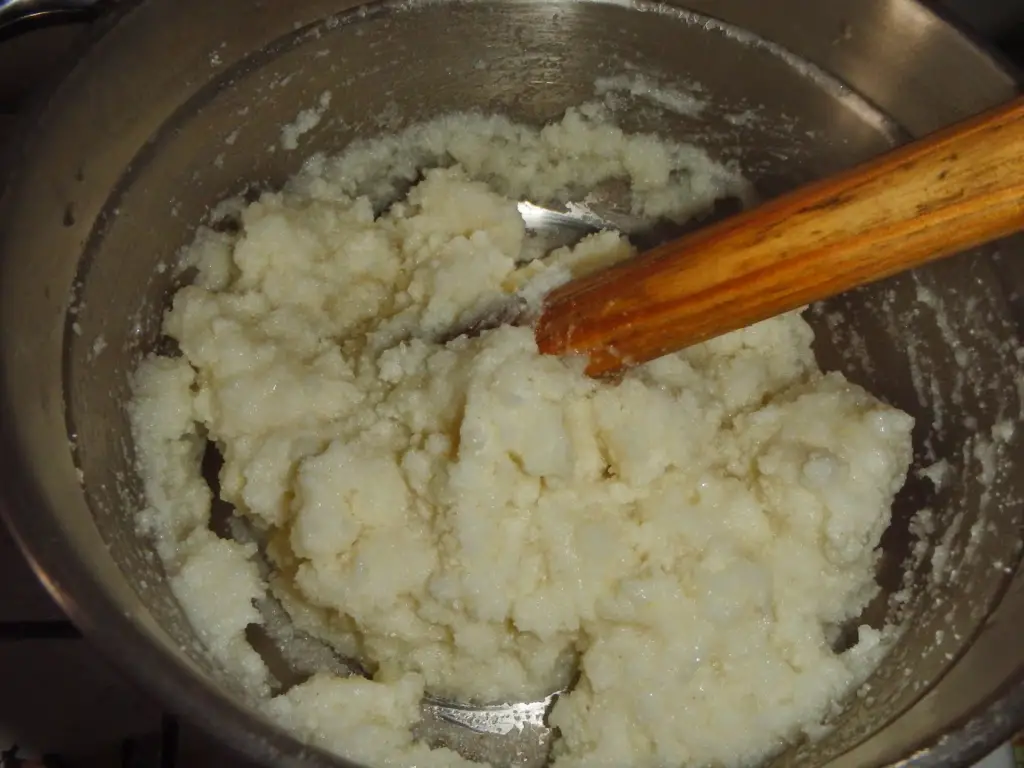
Papa, also commonly referred to as “pap” in other parts of southern Africa, is a staple food in Lesotho and throughout many regions of the continent. It’s a traditional porridge made from maize meal. Its consistency can range from liquid-like to very firm, based on individual preferences and the intended accompanying dishes.
History and Background
- The cultivation of maize, introduced by Portuguese traders in the 16th century, became widespread throughout southern Africa. Over time, maize became a staple food.
- Papa (or pap) evolved as a common way to consume maize, offering an affordable, filling, and versatile dish.
- Due to its neutral flavor, papa serves as the perfect accompaniment to a variety of dishes, from meat stews to vegetable relishes.
Lesotho Cuisine – Papa – Ingredients
- Maize meal (white or yellow, depending on preference)
- Water
- Salt to taste
Food of Lesotho – Recipe for Papa
Boil Water
In a large pot, bring water to a boil. The amount of water depends on the desired consistency of the pap. For a starting point, use a 4:1 ratio of water to maize meal for a firmer pap.
Add Salt
Once the water is boiling, add salt to taste. Stir well.
Add Maize Meal
Reduce the heat to a low setting.
Gradually add the maize meal to the boiling water, sprinkling it in steadily while stirring to prevent lumps from forming.
Stir and Cook
- Once all the maize meal has been added, stir thoroughly to ensure no lumps.
- Cover the pot with a lid and let it simmer for a few minutes.
- After about 5 minutes, stir the pap again, making sure to reach the bottom of the pot. The pap should start to thicken.
Steam
- Reduce the heat to the lowest setting.
- Cover the pot and let the pap steam for about 20-30 minutes. This will allow it to cook thoroughly and attain a smooth consistency.
Check Consistency
After steaming, check the pap’s consistency. If it’s too thick, you can add a little boiling water and mix well. If it’s too soft, allow it to cook a bit longer to thicken.
Serving
- Once the desired consistency is reached, remove the pot from heat.
- Serve the papa while hot, typically as a base for meat dishes, sauces, or vegetable relishes.
It’s essential to remember that the consistency of papa is a personal preference. Some like it very firm (almost dough-like), while others prefer a softer, porridge-like consistency. Adjust the water-to-maize meal ratio based on your liking.
Lesotho Food – Likhobe
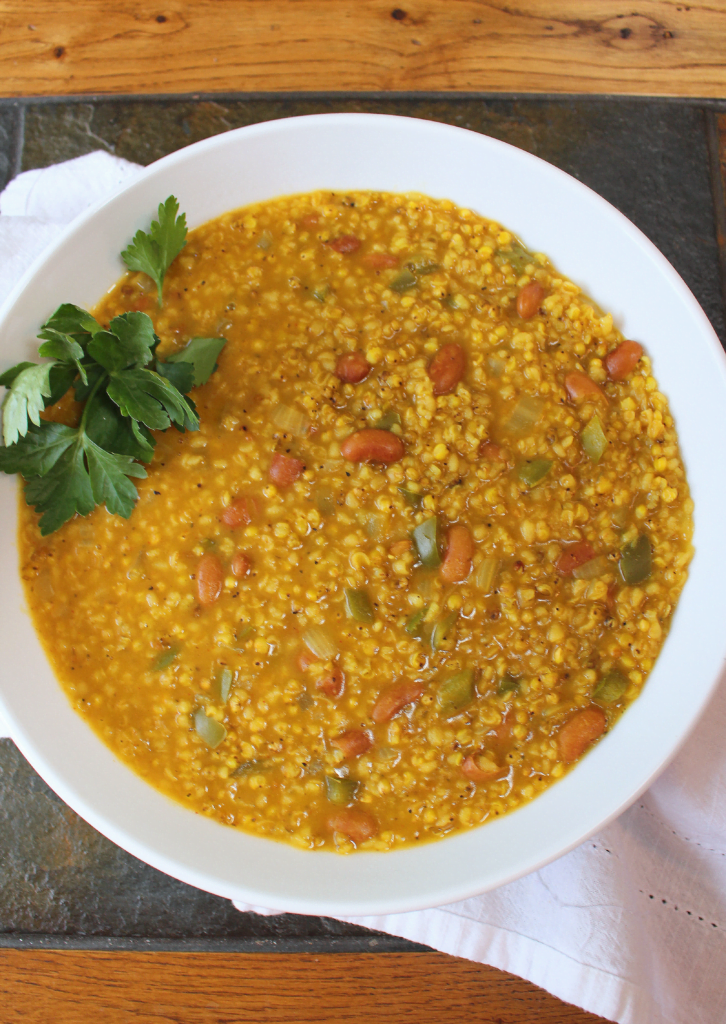
Likhobe is a traditional dish from Lesotho that primarily consists of mixed grains and legumes, particularly maize and beans. The blend of these staples results in a hearty and nutritious meal.
History and Background
- Likhobe has roots in Basotho cuisine and showcases the significance of grains and legumes in the dietary habits of Lesotho.
- The combination of these ingredients is not only delicious but also packed with essential nutrients.
- The dish exemplifies the sustainability of traditional Basotho cooking by combining available resources to produce a filling and wholesome meal.
Lesotho Cuisine – Ingredients for Likhobe
- Dried maize kernels
- Dried beans (commonly red kidney beans or other local varieties)
- Water
- Salt to taste
Food of Lesotho – Recipe for Likhobe
Preparing the Ingredients
Soak the dried maize kernels and beans separately in ample water overnight. This process softens the grains and beans and speeds up the cooking time.
Cooking Likhobe
- After soaking, drain the water from the maize and beans.
- In a large cooking pot, combine the soaked maize kernels and beans.
- Add fresh water to the pot, ensuring the mixture is well-submerged.
- Bring the mixture to a boil over high heat.
- After reaching a boil, reduce the heat to a simmer.
- Continually check the pot, stirring occasionally to prevent the contents from sticking to the bottom. If the water reduces significantly, you can add more.
- Cook the mixture until the maize and beans are soft and tender. This process may take a few hours due to the hard nature of the ingredients. Some individuals opt to use a pressure cooker to reduce the cooking time.
Seasoning
Once the maize and beans are thoroughly cooked, season the mixture with salt to taste.
Serving Likhobe
Likhobe is traditionally served hot and can act as the primary dish. It pairs well with various accompaniments such as vegetables, pickled salads, or meat dishes.
Likhobe, with its modest list of ingredients, offers a rich taste and nutritious value, making it a favored choice among many in Lesotho. It’s a testament to the Basotho’s ingenuity in crafting hearty meals from readily available resources.
Lesotho Food – Lekhotloane
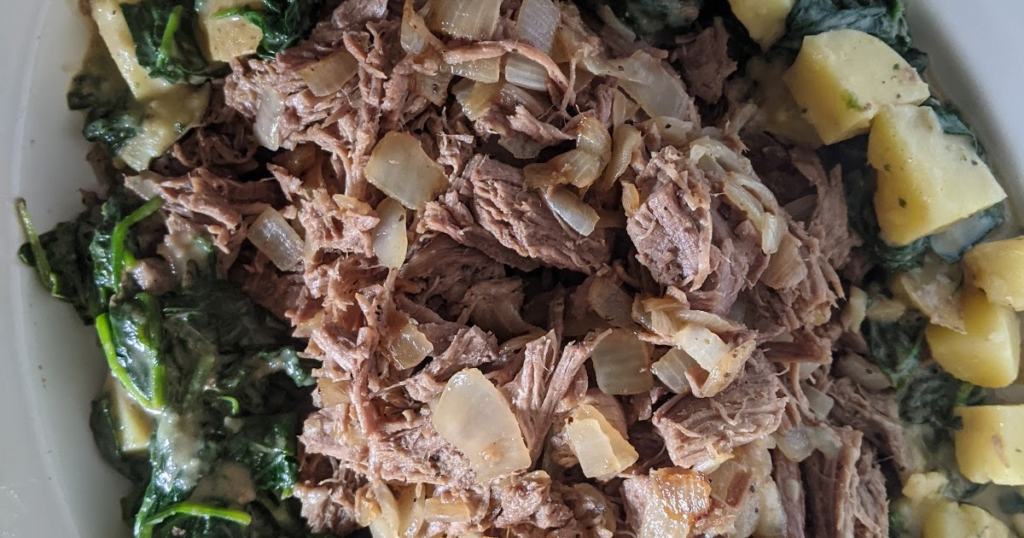
Lekhotloane is a traditional Lesotho dish made from chopped, dried and fermented maize stalks. It’s a unique preparation that harnesses the maize plant’s entire part, ensuring minimal wastage and maximizing the food resource. Here’s a deeper dive into the dish:
History and Background
- Maize is a staple in many parts of Africa, including Lesotho. While the kernels are often used to prepare dishes like papa, other parts of the plant aren’t wasted either.
- Lekhotloane is a way of preserving and consuming the maize stalks, ensuring that almost every part of the maize plant is utilized.
- The fermentation process not only preserves the stalks but also imparts a unique sour flavor to the dish.
Lesotho Cuisine – Lekhotloane Ingredients
- Dried maize stalks, chopped into small pieces
- Water
- Salt to taste
- Optional: Vegetables or meat for added flavor and nutrition
Food of Lesotho – Recipe for Lekhotloane
Preparation of Maize Stalks
After harvesting maize, take the stalks and chop them into small pieces.
Spread these pieces out in the sun to dry thoroughly. This may take several days, depending on the weather.
Fermentation
- Once the stalk pieces are dried, pack them tightly in a container or traditional fermentation vessel.
- Add water to the container, enough to cover the stalks.
- Cover the container and leave it in a warm place to allow fermentation. This process can take several days to a few weeks, depending on environmental factors and the desired level of sourness.
Cooking Lekhotloane
- After fermentation, drain any excess water from the stalks.
- In a large pot, add the fermented maize stalks and fresh water. The water should be enough to cover the stalks.
- Bring to a boil, then reduce the heat and let it simmer.
- As it cooks, you’ll notice the dish becoming softer and acquiring a sour aroma.
- Add salt to taste. If you prefer, you can also add vegetables or meat to make the dish more substantial. Some people might add tomatoes, onions, and even leafy greens.
- Continue to cook until the stalks are soft and fully cooked, and any added ingredients are tender.
Serving
Lekhotloane can be enjoyed as a side dish with papa or other main courses. Its sour flavor can be a unique contrast to other dishes.
Lekhotloane showcases the resourcefulness of traditional Lesotho cooking, where every part of a plant or animal is used, ensuring sustainability and reducing waste.
Lesotho Food – Moroho (Leafy Greens)

Moroho, in Lesotho and in many parts of southern Africa, refers to a dish made from leafy green vegetables. This versatile dish can be made with a variety of greens, and its simplicity emphasizes the fresh taste of the vegetables.
History and Background
- The term “moroho” generically refers to wild or cultivated green leafy vegetables.
- For many generations, communities in Lesotho and other parts of southern Africa have consumed moroho as a nutritious staple side dish.
- Before modern agriculture, indigenous communities would forage for wild varieties of moroho. With time, more familiar greens like spinach and cabbage were introduced and became part of the moroho-making tradition.
Lesotho Cuisine – Moroho Ingredients
- Fresh leafy green vegetables (spinach, cabbage, wild greens, or other available varieties)
- 1-2 onions, chopped
- 2-3 garlic cloves, minced (optional)
- 2 tomatoes, diced (optional)
- Salt to taste
- Cooking oil or butter
- Water
- Optional: red or green chili, bell peppers, or other preferred seasonings
Food of Lesotho – Recipe for Moroho
Cleaning the Greens
- Thoroughly wash your chosen leafy greens to remove dirt or any foreign particles.
- Drain the excess water and roughly chop the greens into sizable pieces.
Cooking the Base
- In a pot or large pan, heat a bit of cooking oil or butter.
- Add the chopped onions. Sauté until they become translucent.
- If using garlic, add it next and sauté for another minute or so until fragrant.
Adding the Greens
- Add the chopped leafy greens to the pot. If the greens are tougher or more fibrous, it’s good to add a bit of water to help them cook down.
- Stir well, making sure the onions (and garlic, if used) are well-mixed with the greens.
- Cover the pot with a lid, allowing the greens to steam and wilt.
Seasoning and Final Touches
- After the greens have wilted (about 5-10 minutes), you can add the diced tomatoes if you’re using them.
- Season with salt. If you prefer some heat, add finely chopped chili at this stage.
- Continue to cook for another 5-7 minutes, allowing all the flavors to meld together.
Serving
- Once the moroho is fully cooked and seasoned to your liking, it’s ready to be served.
- It pairs wonderfully with dishes like papa, or can be enjoyed as a standalone vegetable dish.
Moroho celebrates the fresh and natural taste of leafy greens, but it’s also flexible, allowing for various adaptations based on available ingredients or personal preferences. Whether made with wild foraged greens or garden-harvested spinach, the essence of moroho is its celebration of nature’s bounty.
Lesotho Food – Shisa nyama (barbecue meat)
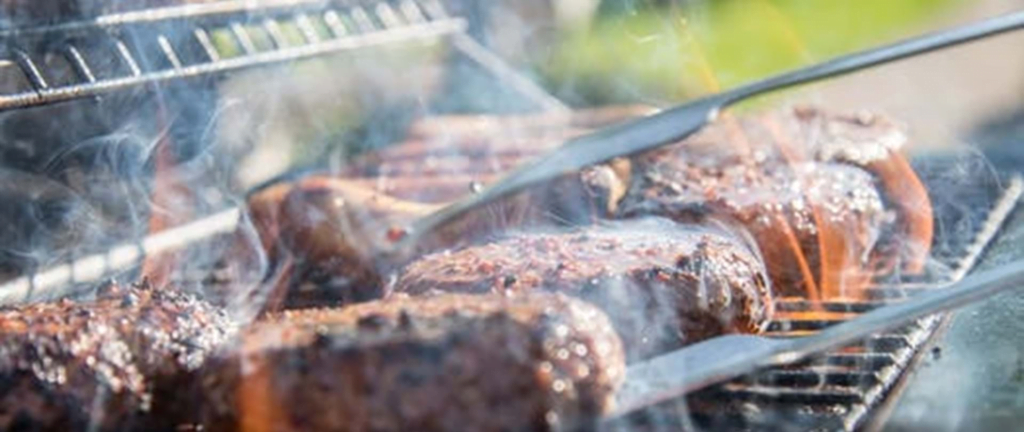
Shisa nyama (often referred to as “braai” in other parts of southern Africa) is more of a social ritual and event than a specific dish. The term “shisa nyama” is Zulu for “burn meat,” and it refers to barbecuing or grilling meats over an open flame.
While Shisa nyama is a widespread practice across southern Africa, it’s not uniquely Lesothoan. That said, various regions might have their particular flavors or side dishes.
History and Background
- Shisa nyama has its roots in the butcher shops of South Africa’s townships. Butchers would set up a barbecue outside their shops for customers to grill the freshly purchased meats.
- It soon evolved into a community and social event, where people gather around the fire, share stories, listen to music, and enjoy the grilled meats together.
- Over time, many Shisa nyama venues have become established eateries, some even gaining gourmet status, offering a range of side dishes and marinades to accompany the meat.
Lesotho Cuisine Ingredients: Meat (commonly used types and cuts)
- Beef steaks and boerewors (a type of sausage)
- Chicken, often marinated or spiced
- Lamb or mutton chops
- Pork chops or spare ribs
Marinades and Spices (these can vary greatly)
- Garlic
- Ginger
- Paprika
- Chili (fresh or powdered)
- Lemon juice
- Soy sauce
- BBQ sauce
- Herbs like rosemary, thyme, and coriander
Side Dishes (commonly served with the meats)
- Pap (maize porridge)
- Grilled or boiled maize cobs
- Potato salad
- Coleslaw
- Tomato and onion salad
- Chakalaka (a spicy vegetable relish)
Food of Lesotho – Recipe for Shisa Nyama
Preparing the Meat
- If using chicken, marinate it for a few hours in a mixture of lemon juice, garlic, ginger, chili, and other desired spices.
- Beef, lamb, or pork can be marinated using a combination of BBQ sauce, soy sauce, garlic, ginger, and herbs.
- Boerewors requires no marination.
Preparing the Grill (Braai)
- Use hardwood or charcoal for the grill. Light up the fire and let it burn down until the coals are white-hot.
Grilling the Meat
- Place the meat on the grill, turning occasionally. The cooking time will depend on the type and cut of the meat. Generally, boerewors takes about 15 minutes, steaks depending on thickness and preferred doneness might take 10-15 minutes, while chicken could take longer, especially if it’s a whole chicken or large pieces.
- Baste the meat occasionally with the leftover marinade to keep it moist and flavorful.
Preparing Side Dishes
- Pap: Boil water, add a bit of salt, and slowly stir in maize meal. Reduce the heat and let it simmer, stirring occasionally until it’s soft and smooth.
- Tomato and onion salad: Dice tomatoes and onions, season with salt, pepper, and a dash of vinegar.
- Chakalaka: Sauté onions, garlic, and grated carrots. Add bell peppers, tomatoes, baked beans, and chili. Season with curry powder, paprika, and other preferred spices. Cook until all ingredients are well combined and softened.
Serving
- Once meats are grilled to preference, serve them hot with the side dishes.
- Cold beverages, especially local beers, are often enjoyed with Shisa nyama.
Remember, Shisa nyama is as much about the experience and the company as it is about the food. Enjoy the process, the gathering, and the delicious results!
Lesotho Food – Likhobe (Boiled Maize Kernels)

Likhobe is a traditional dish from Lesotho made from mixed grains and legumes, primarily maize and beans. It showcases the importance of grains and legumes in Basotho cuisine and is a hearty and nutritious dish.
History and Background
- The Basotho people, native to Lesotho, have cultivated and consumed grains and legumes for centuries, as these crops are well-suited to the region’s climate and soil.
- Likhobe merges these staple ingredients, emphasizing the synergy of nutrition and taste.
- This dish showcases the sustainable practices of traditional Basotho farming and cooking, where available resources are combined to create a wholesome meal.
Ingredients for Likhobe
- Dried maize kernels
- Dried beans (commonly red kidney beans or other local varieties)
- Water
- Salt to taste
Food of Lesotho – Recipe for Likhobe
Preparing the Ingredients
Soak the dried maize kernels and beans separately in water overnight. This softens them and reduces cooking time.
Cooking
- In a large pot, combine the soaked maize and beans. Add fresh water, ensuring that the grains and legumes are well-covered.
- Bring the mixture to a boil over high heat.
- Once boiling, reduce the heat to low, allowing the mixture to simmer.
- Periodically check the pot, stirring to prevent sticking and adding more water if necessary. The aim is to achieve a soft, porridge-like consistency.
- Cook until both the maize and beans are soft and tender. This might take several hours, given the nature of the ingredients. Some people opt to use pressure cookers to reduce the cooking time.
Seasoning
Once the maize and beans are fully cooked, season with salt to taste. Mix well and ensure the salt is evenly distributed.
Serving
Likhobe can be served hot as a main dish. Given its neutral base, it pairs well with various accompaniments, such as meat stews, vegetables, or pickled salads.
Likhobe exemplifies the concept of “simple but satisfying.” While its ingredient list might be minimal, the dish provides ample nutrition and is a testament to the Basotho’s ability to create fulfilling meals from available resources.
Lesotho Cuisine – Moroho (steamed vegetables)

Moroho, commonly known in Lesotho, refers to wild or cultivated leafy green vegetables. In many parts of southern Africa, moroho is a staple side dish, akin to how spinach or kale might be used in other parts of the world. It’s a simple, nutritious dish that’s often enjoyed with pap (maize porridge) or other main dishes.
History and Background
- Moroho is deeply rooted in the culinary traditions of southern Africa, including Lesotho. The term “moroho” is generic and can refer to various leafy greens, including spinach, cabbage, or wild varieties.
- Before the introduction of crops like spinach and cabbage, indigenous communities in Lesotho would forage for wild varieties of moroho, which are rich in vitamins and minerals.
- Today, cultivated greens are more commonly used, but the preparation remains quite traditional and straightforward.
Moroho Ingredients
- Fresh leafy green vegetables (spinach, cabbage, amaranth leaves, or other wild greens if available)
- 1-2 onions, finely chopped
- 2-3 garlic cloves, minced (optional)
- 2 tomatoes, diced (optional)
- Salt to taste
- Cooking oil or butter
- Red or green chili (optional, for those who prefer a bit of heat)
- Water
Food of Lesotho – Recipe for Moroho (Steamed Vegetables)
Preparing the Greens
- Wash the leafy greens thoroughly in cold water to remove any dirt or grit.
- Roughly chop the greens into bite-sized pieces.
Sautéing Base Ingredients
- In a large pot or pan, heat a bit of cooking oil or butter.
- Add the finely chopped onions to the pot and sauté until they are translucent and slightly golden.
- If you’re using garlic, add it to the onions and continue to sauté for another minute.
Cooking the Greens
- Add the chopped greens to the pot. If using tougher greens, you might want to add a bit of water to help them steam and become tender.
- Mix well, ensuring the onions and greens are combined.
- Cover the pot with a lid, reduce the heat, and allow the greens to steam for 5-10 minutes. Stir occasionally to prevent sticking.
Optional Additions
- If you’re using tomatoes, add them to the pot once the greens have wilted and softened.
- If you like some heat, add finely chopped chili or chili flakes at this stage.
- Continue to cook for another 5-7 minutes until the tomatoes have softened and integrated into the greens.
Seasoning
- Season the moroho with salt to taste. Be cautious, as greens can become quite salty quite quickly.
- Stir well, taste, and adjust the seasoning if necessary.
Serving
- Serve the moroho hot alongside pap, rice, or as a side dish to meat or fish.
Moroho is a versatile dish that can be adapted based on available ingredients. Some families might add bell peppers, diced carrots, or even a bit of lemon juice for added flavor. The key is to celebrate the natural taste and nutritional value of the leafy greens.
Lesotho Food – Chakalaka & Pap (a spicy relish made from fermented vegetables)
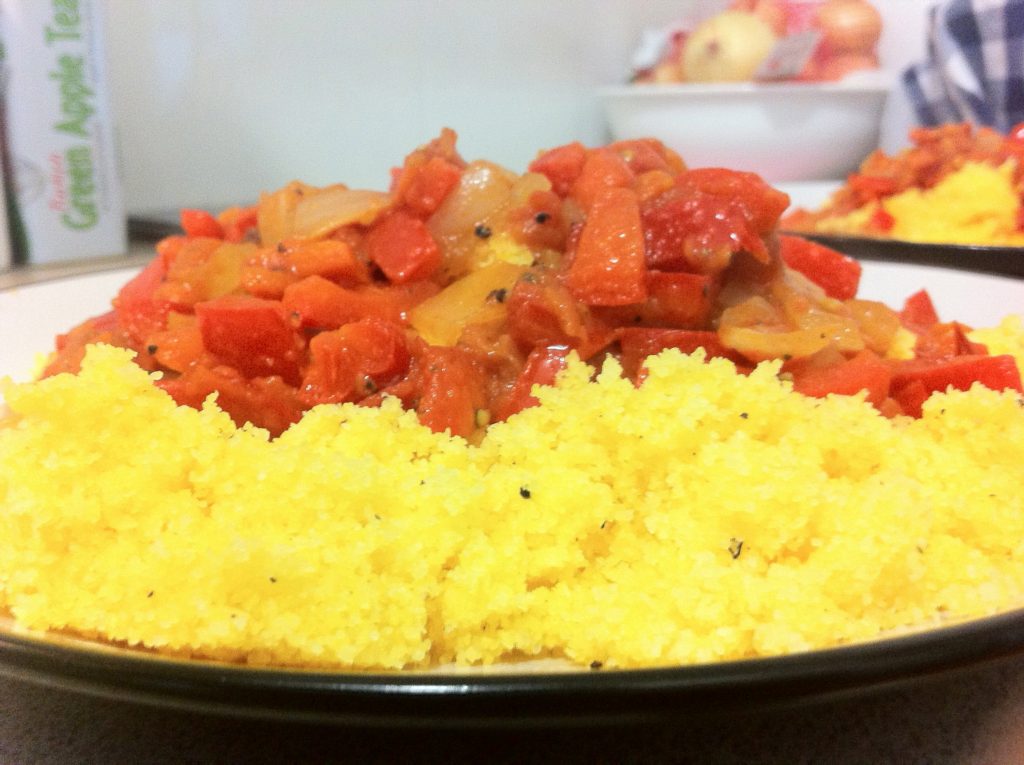
Chakalaka is a spicy vegetable relish originating from South Africa but has also become popular in various countries in the southern African region, including Lesotho. It’s often served with pap, a maize porridge staple.
History and Background for Chakalaka
- Chakalaka’s origins are rooted in the townships of Johannesburg, South Africa.
- It began as a simple dish, but over time various additions and modifications have been made based on personal preference and regional variations.
- Chakalaka made its way to neighboring countries, where it was embraced and adapted to fit local tastes.
Ingredients for Chakalaka
- 2 tablespoons cooking oil
- 1 onion, finely chopped
- 2-3 cloves garlic, minced
- 1 green bell pepper, chopped
- 1 red bell pepper, chopped
- 2 hot chili peppers (like bird’s eye), finely chopped (adjust to heat preference)
- 3 tomatoes, chopped
- 2 carrots, grated
- 1 can of baked beans in tomato sauce (typically 400g)
- 2 teaspoons curry powder
- 1 teaspoon paprika
- Salt and pepper to taste
- Optional: additional vegetables like cabbage or cauliflower, and spices/herbs according to preference.
Food of Lesotho – Recipe for Chakalaka
Sauté Vegetables
Heat oil in a large pan. Add onions, garlic, and chilies. Sauté until the onions are translucent.
Add Spices
Stir in curry powder and paprika, cooking for another 1-2 minutes to release the aromas.
Vegetables
Add the bell peppers, tomatoes, and grated carrots. Stir well and let it simmer for about 10-15 minutes.
Baked Beans
Add the can of baked beans in tomato sauce, stir, and let it simmer for an additional 10 minutes.
Season
Season with salt and pepper. Adjust spices if necessary.
Cool & Serve
Remove from heat and allow to cool slightly. Chakalaka can be served warm or cold.
For Pap: You can refer to the previous pap recipe I provided. It serves as a perfect base for the spicy and flavorful Chakalaka.
Serving
- Serve the warm pap on a plate or in a bowl, and top it with a generous portion of Chakalaka.
Chakalaka and pap together provide a harmonious balance of spice, flavor, and texture – the mild, soft pap perfectly complements the vibrant and spicy Chakalaka. This combination is a beloved staple in many southern African households.
Conclusion
As I conclude this article on Lesotho cuisine and recipes, I am left with a deep appreciation for the country’s rich culinary heritage. The traditional Lesotho dishes, authentic ingredients, food culture, and cooking techniques all come together to create a unique flavor profile that is truly a taste of Africa.
If you’re feeling inspired to try your hand at cooking some of these delicious dishes, there are plenty of resources available online for Lesotho recipe inspiration. From hearty stews to savory meat dishes, there is something for every palate. And with the guidance of the cooking techniques explored in this article, you’ll be on your way to mastering the art of Basotho cuisine.
So why not bring a taste the Food of Lesotho – to your own kitchen? With these Lesotho recipes, you can experience the flavors and traditions of this beautiful country without ever leaving your home. I hope you enjoy the journey and the delicious food that awaits!
FAQ’s
What is Lesotho cuisine?
Lesotho cuisine refers to the traditional dishes, ingredients, and cooking techniques that are part of the food culture of Lesotho, a country in Southern Africa. It is known for its hearty stews, savory meat dishes, and the use of local ingredients.
What is the Lesotho National Food?
Pap en vleis is considered the national food of Lesotho. It consists of a maize porridge (pap) served with grilled or roasted meat (vleis). This traditional dish is a staple in Lesotho and is often enjoyed during special occasions and family gatherings.
What are some popular Lesotho recipes?
Some popular Lesotho recipes include pap, a porridge made from maize, and potjiekos, a slow-cooked stew made with meat and vegetables. Other traditional dishes include moroho, a dish made with indigenous leafy greens, and mokoenya, a creamy chicken dish.
What are authentic Lesotho ingredients?
Authentic Lesotho ingredients include maize, sorghum, beans, indigenous vegetables like moroho, and spices such as paprika and coriander. These ingredients are essential in creating the unique flavors of Lesotho’s cuisine.
What is the significance of food in Lesotho’s culture?
Food holds great significance in Lesotho’s culture. It is a symbol of community, tradition, and celebration. Communal meals play an important role in bringing people together, and food is often a highlight of traditional events and social gatherings.
What are some traditional Lesotho cooking techniques?
Traditional Lesotho cooking techniques include slow cooking in clay pots, grilling over an open fire, and using traditional utensils like the lesheshe, a wooden spoon. These techniques contribute to the unique flavors and textures of Basotho cuisine.
What are the characteristics of Food of Lesotho?
The food of Lesotho is known for its hearty and traditional dishes. Staple foods include maize, sorghum, and beans, which are often used to prepare dishes like pap, a thick porridge-like staple, and moroho, a dish made from mixed greens.
Other popular dishes include mokoenya, a slow-cooked lamb stew, and sechu, a type of bread.
Last Edited

